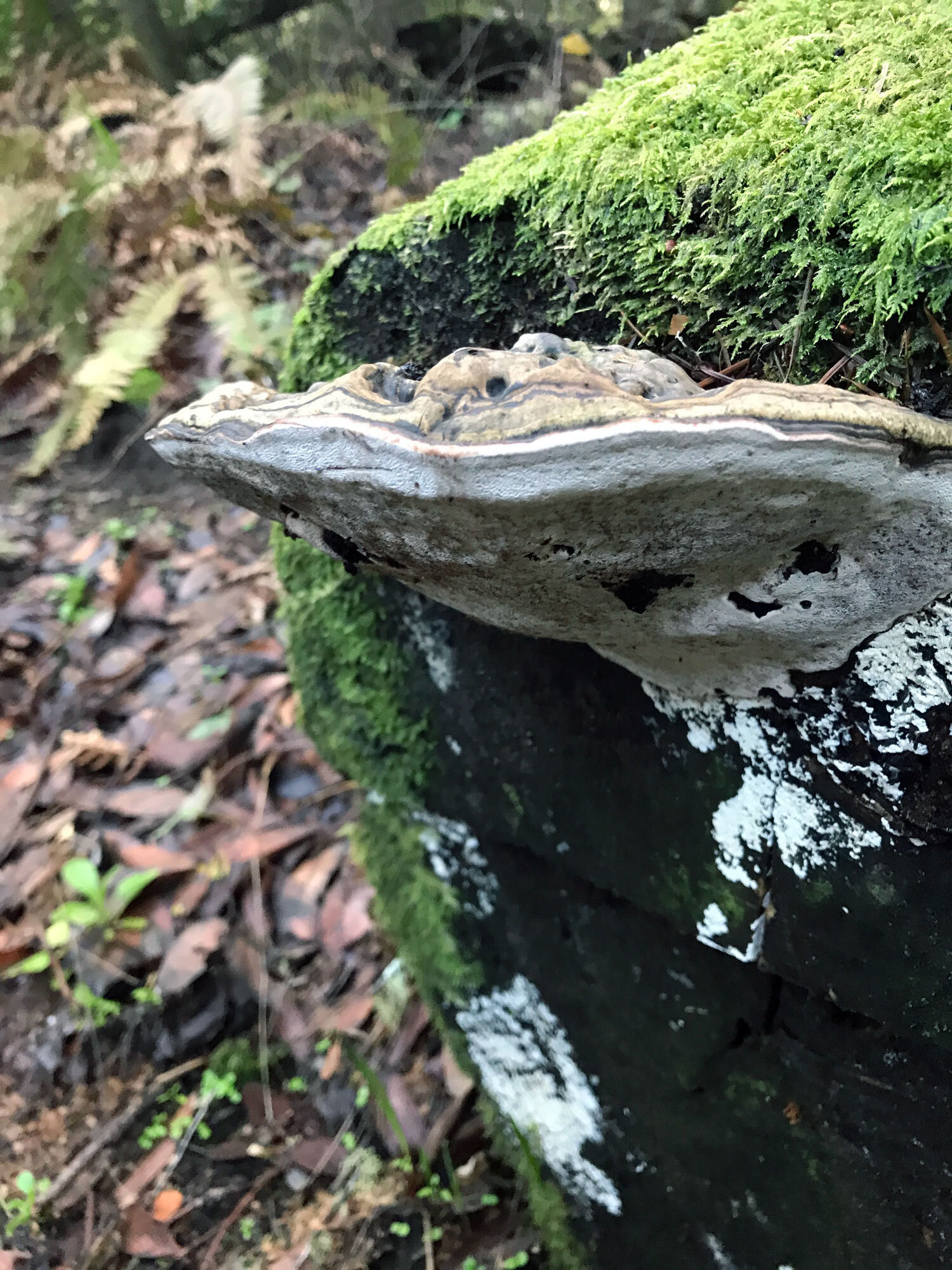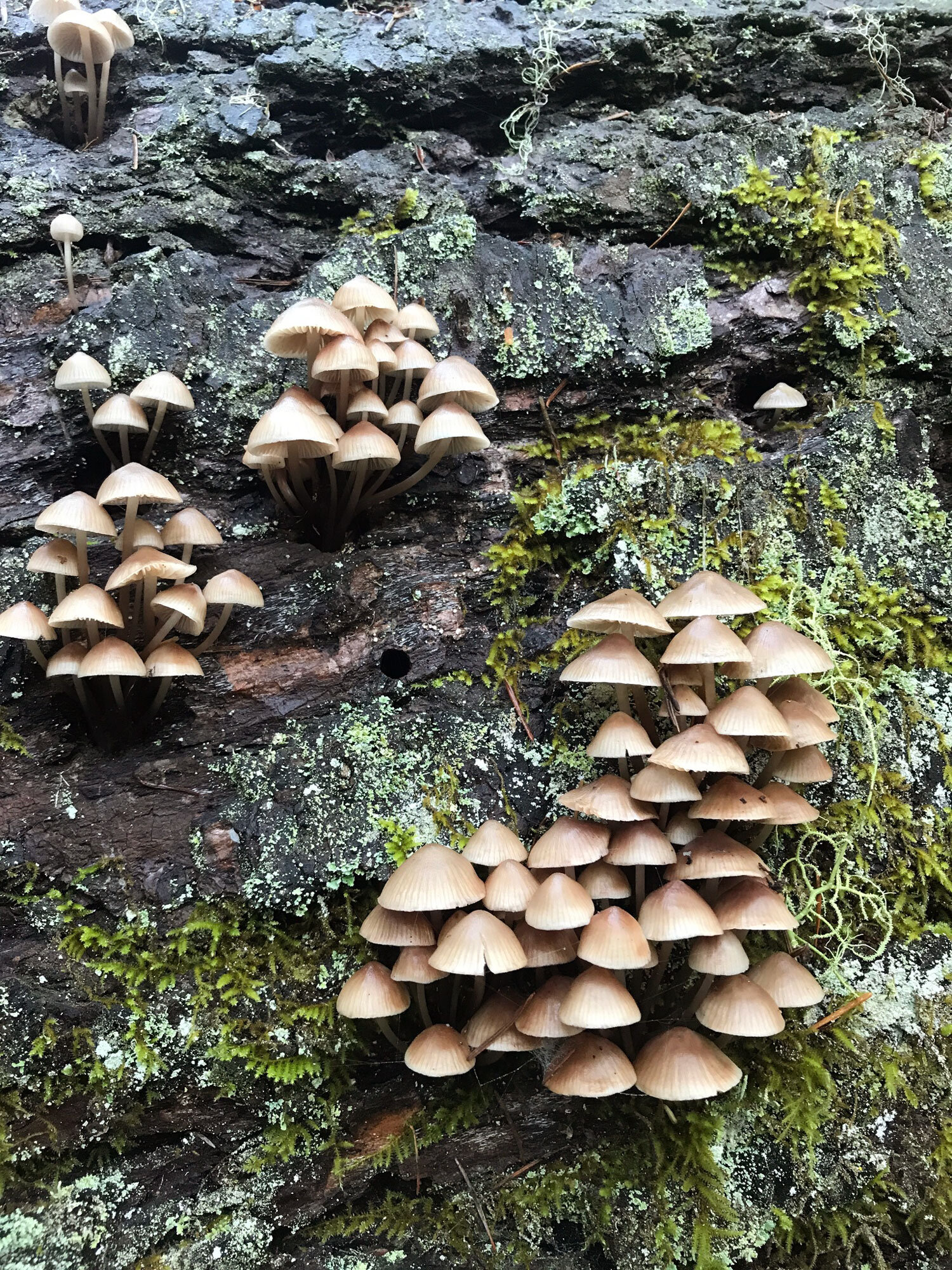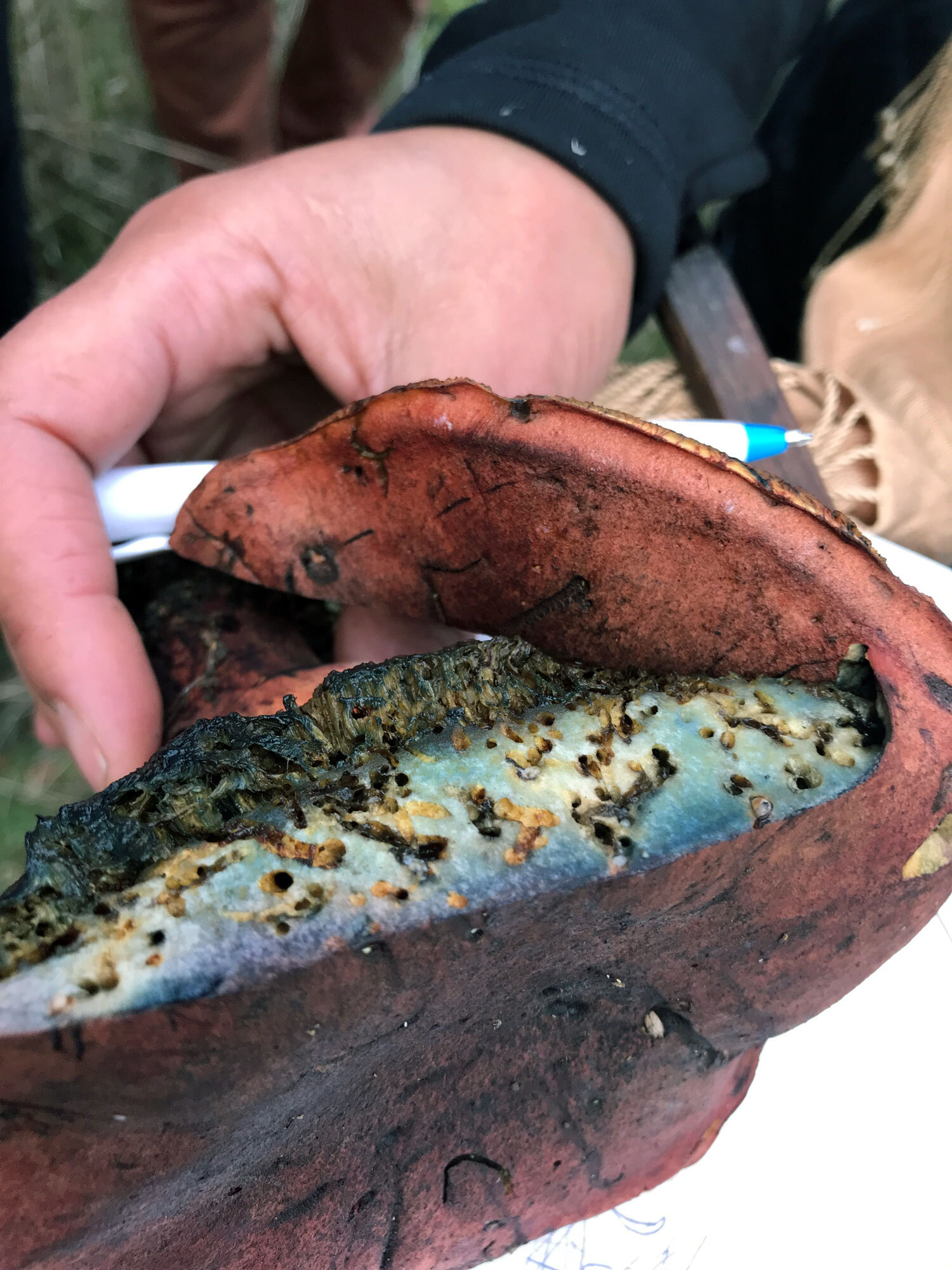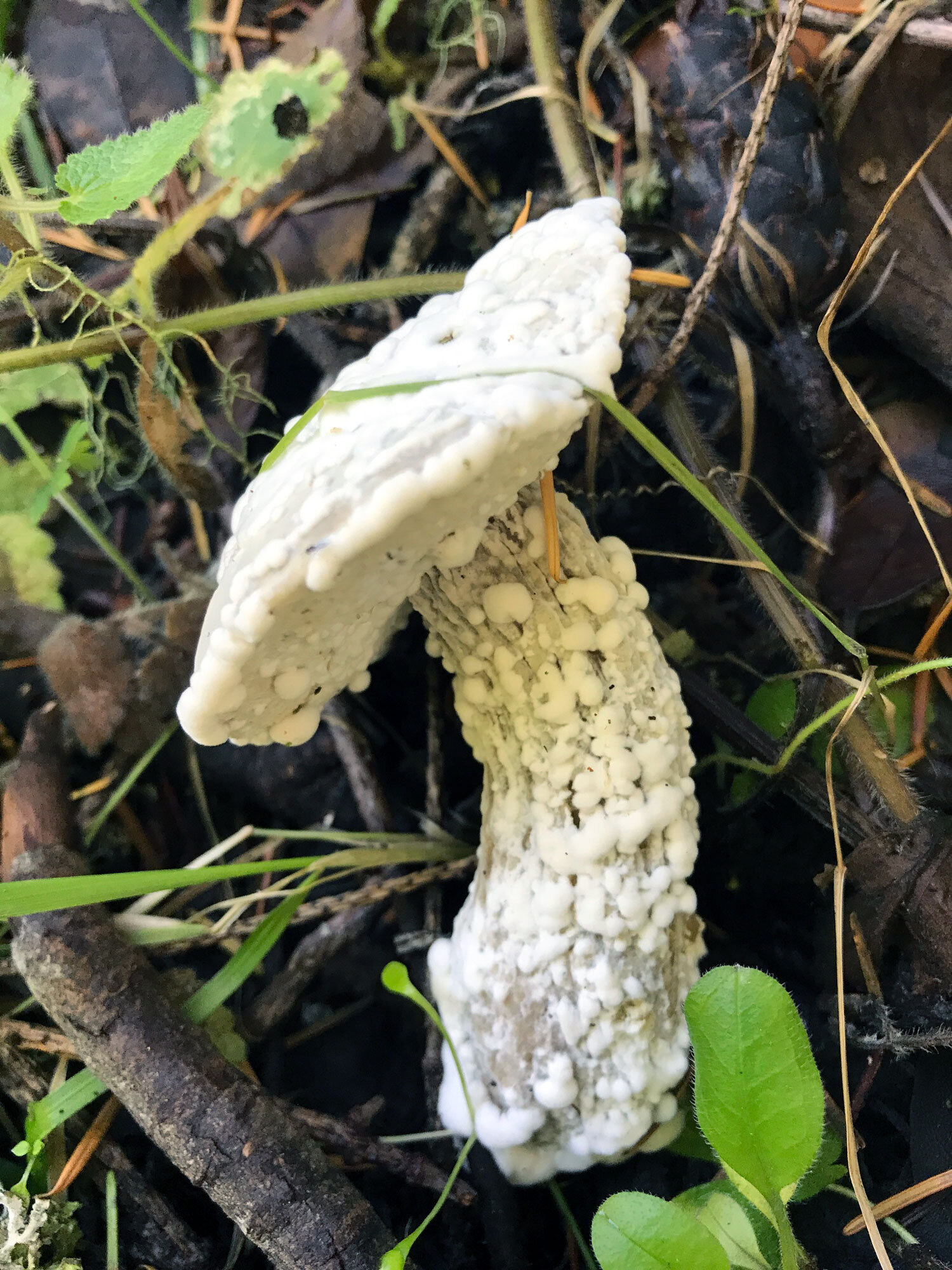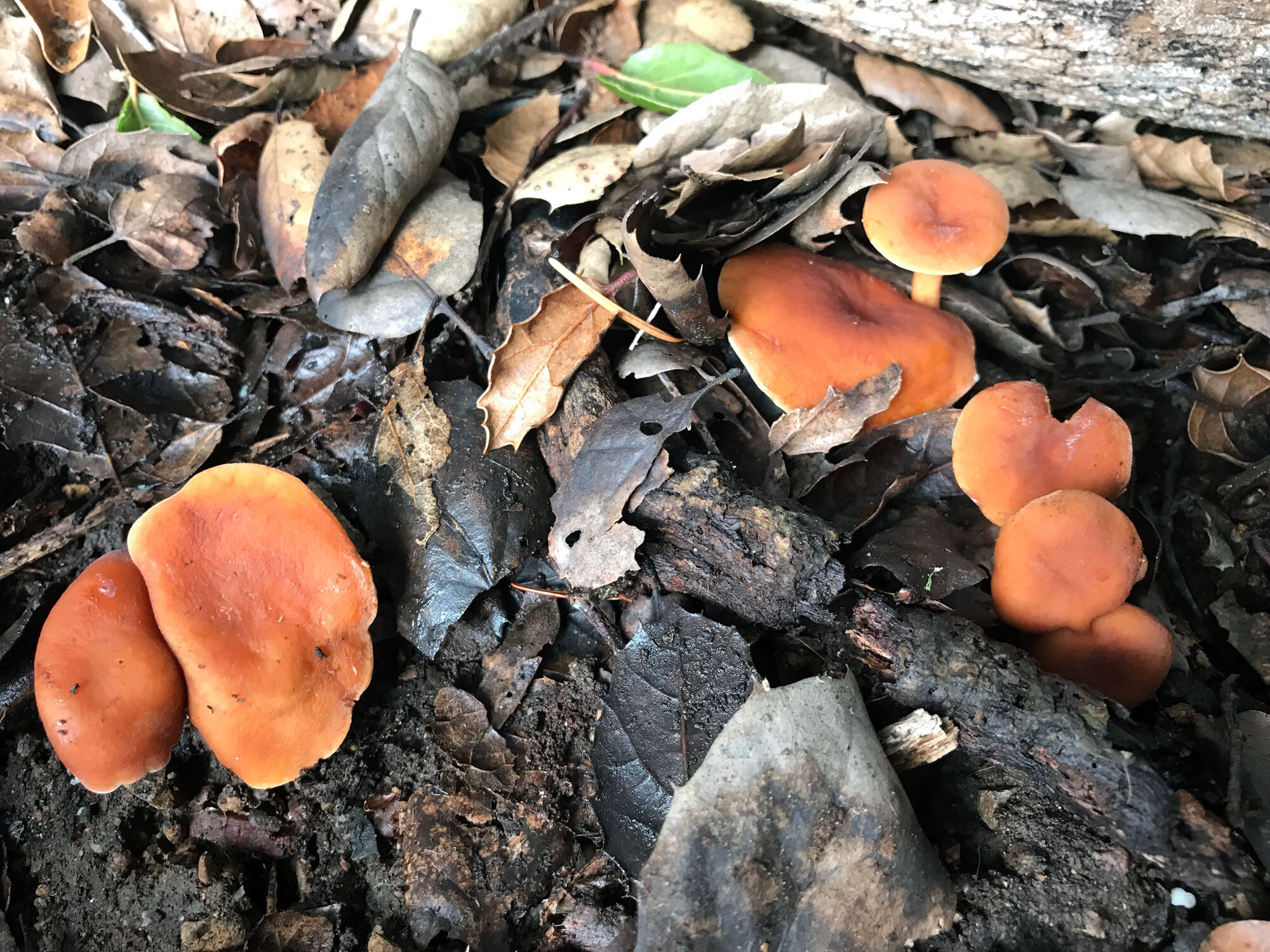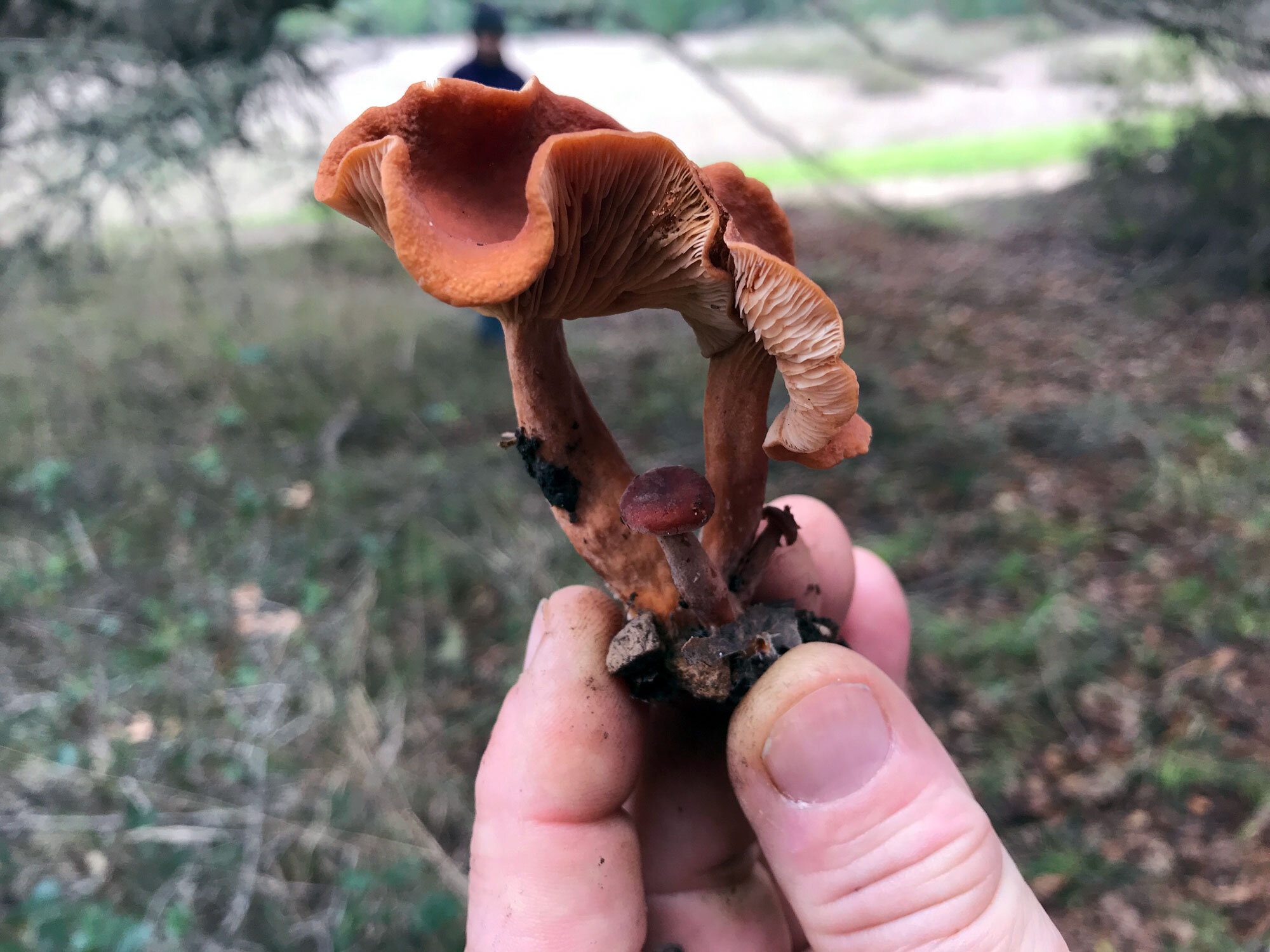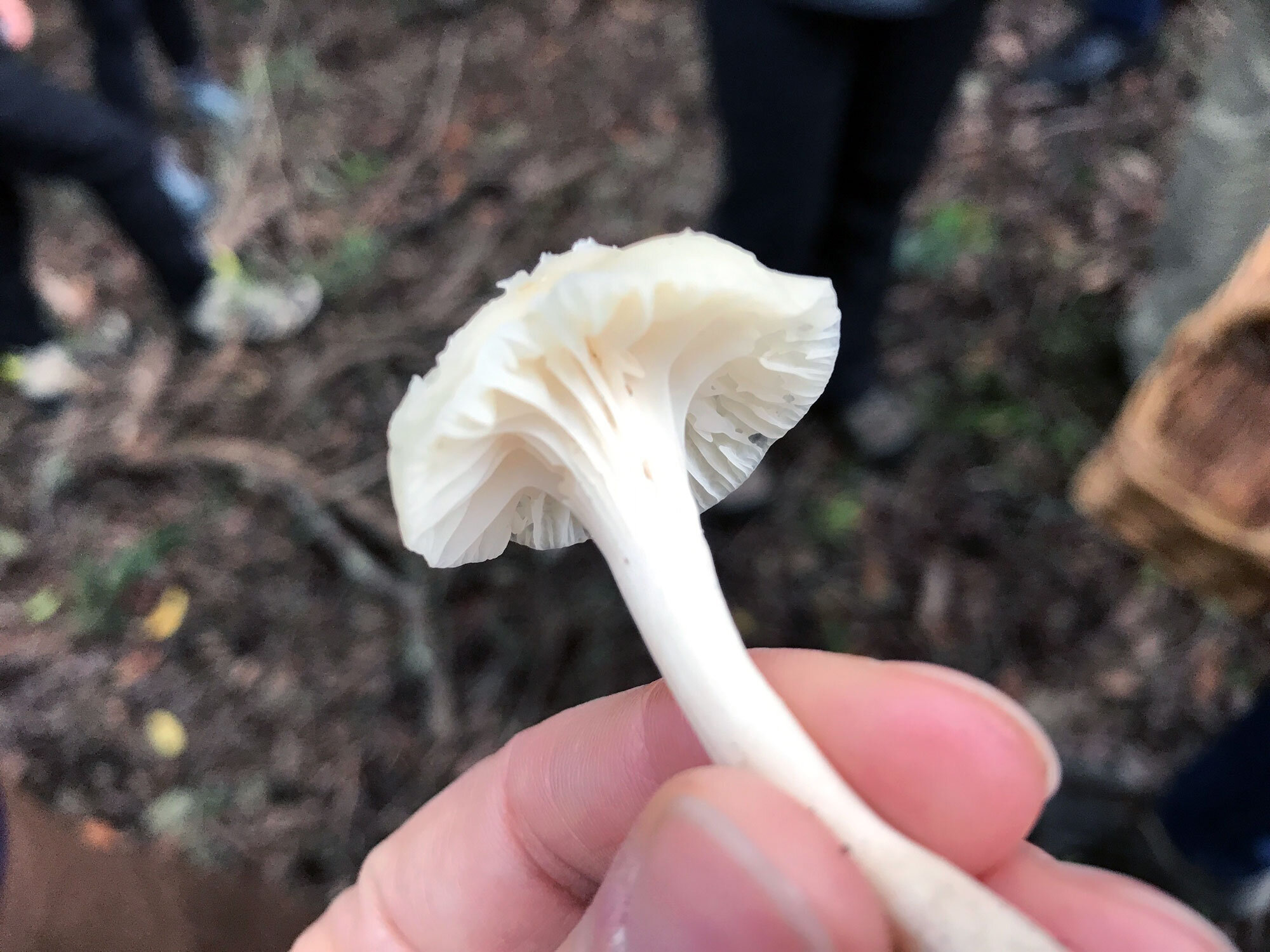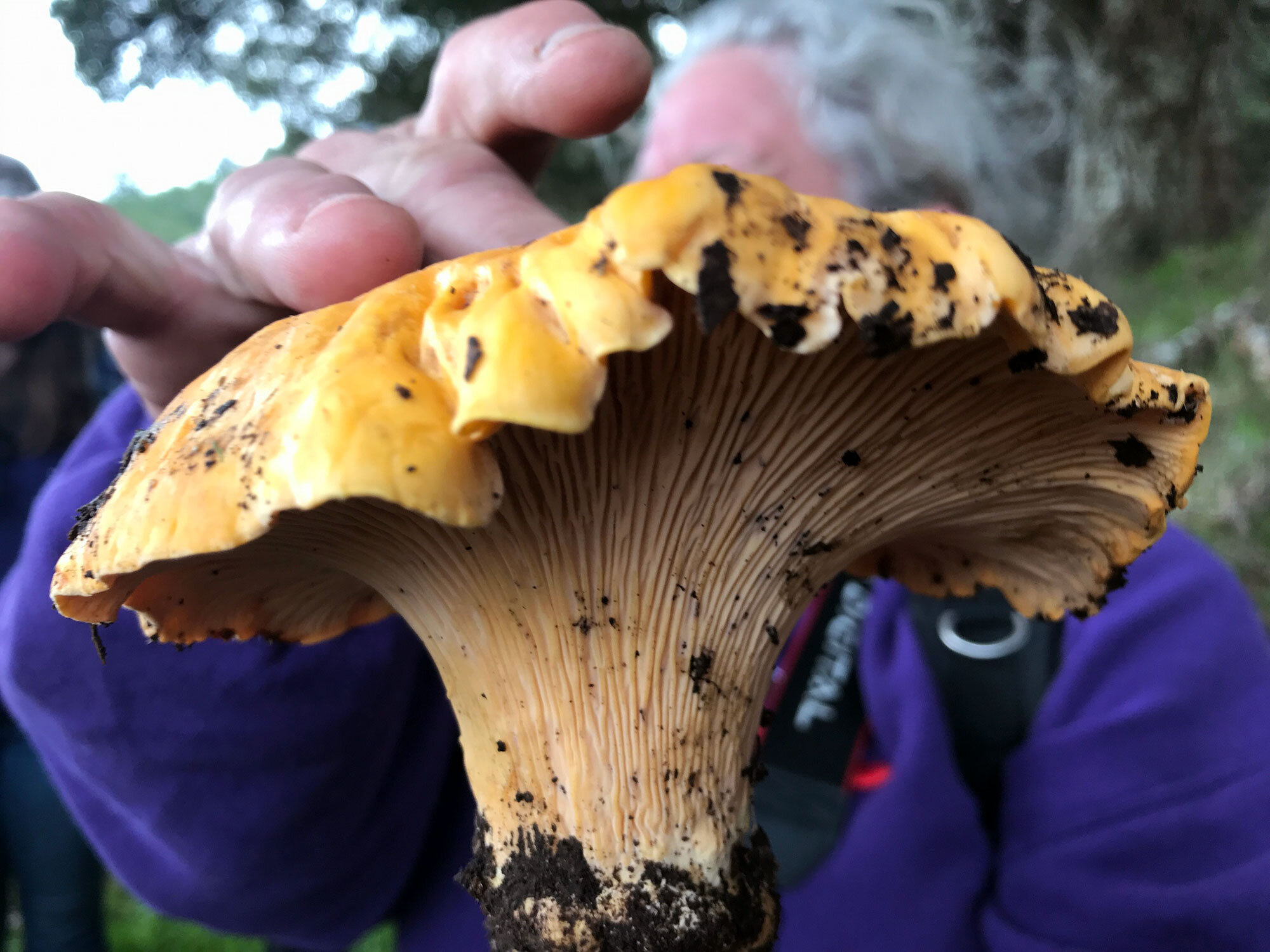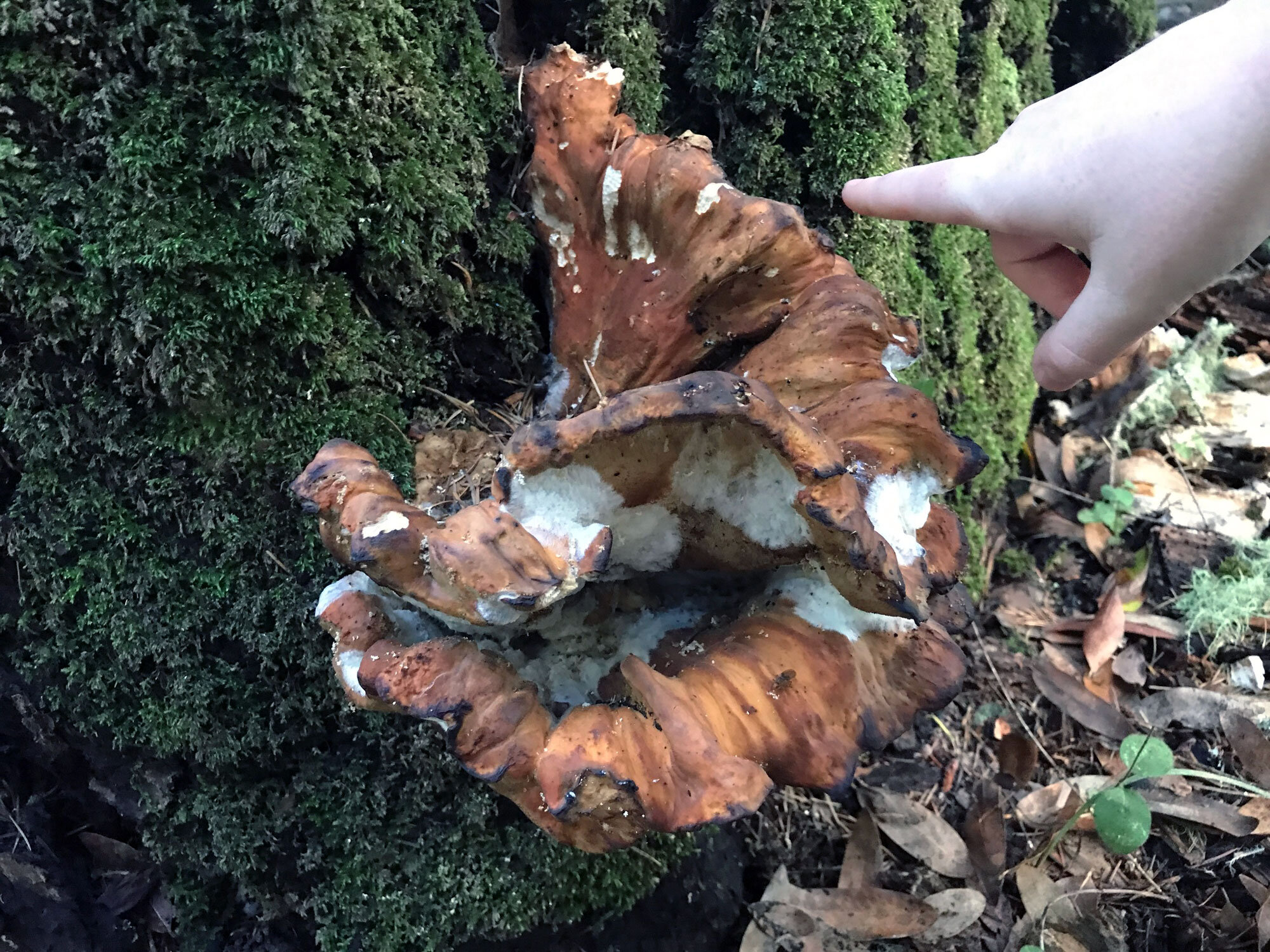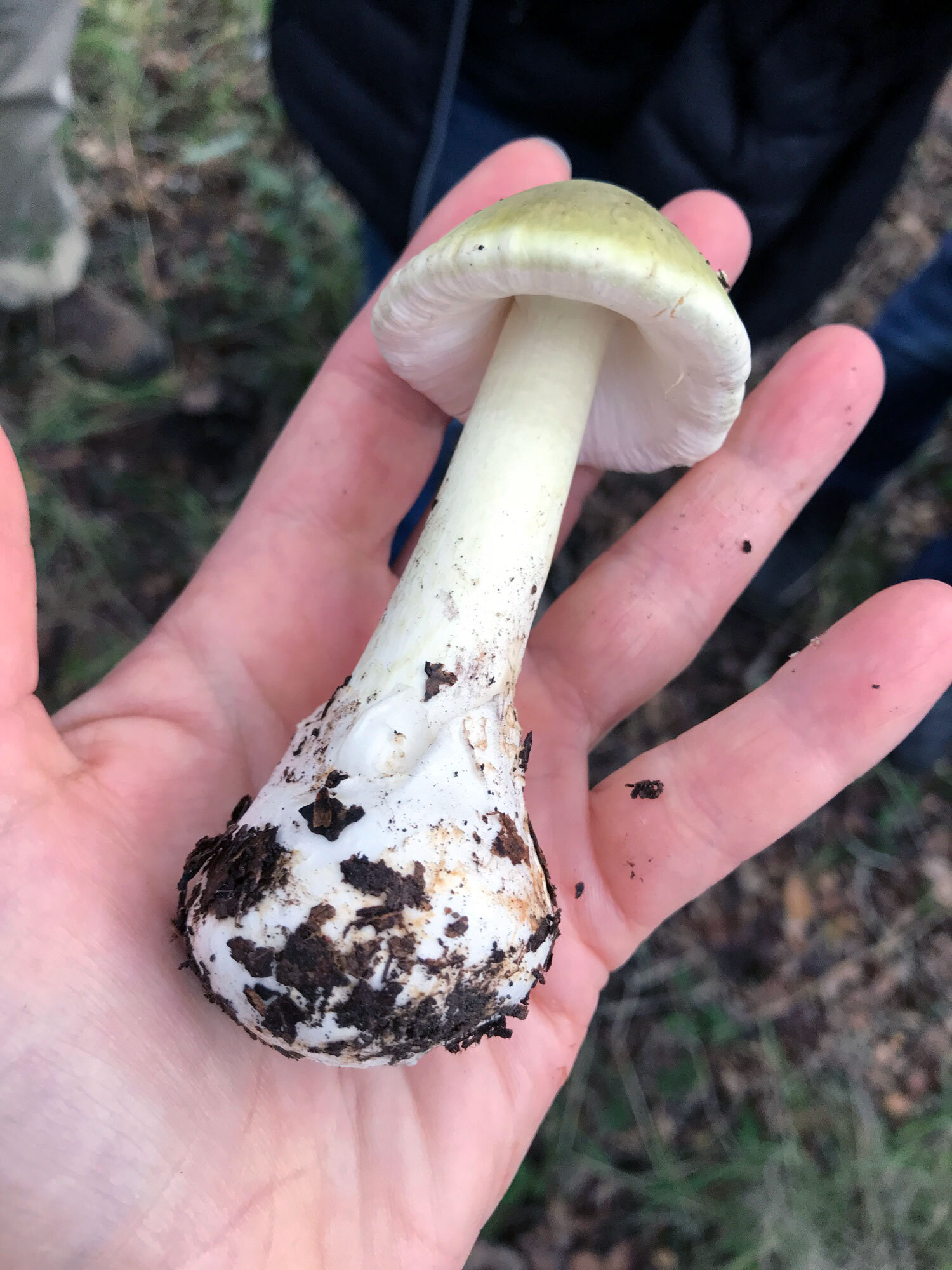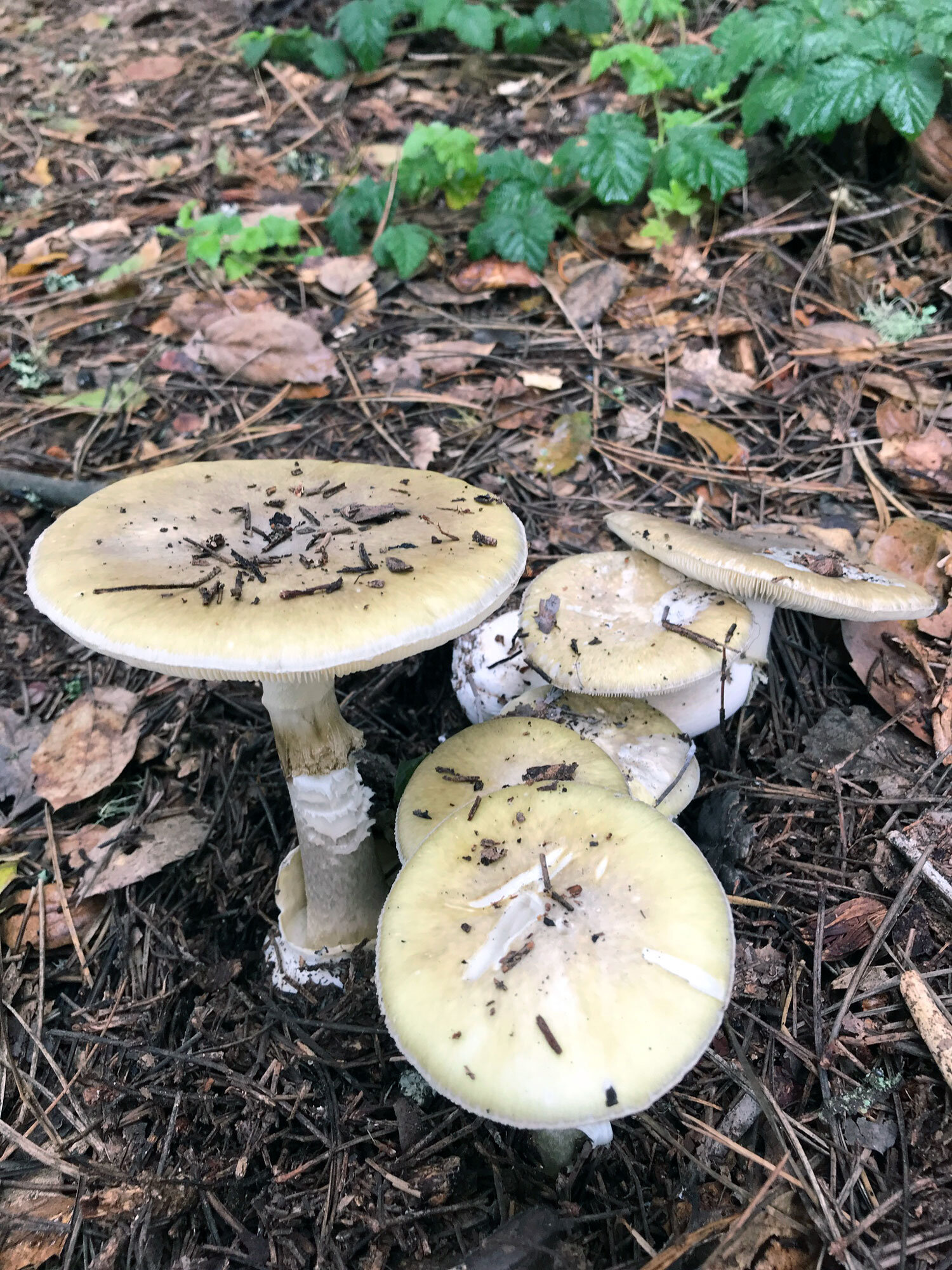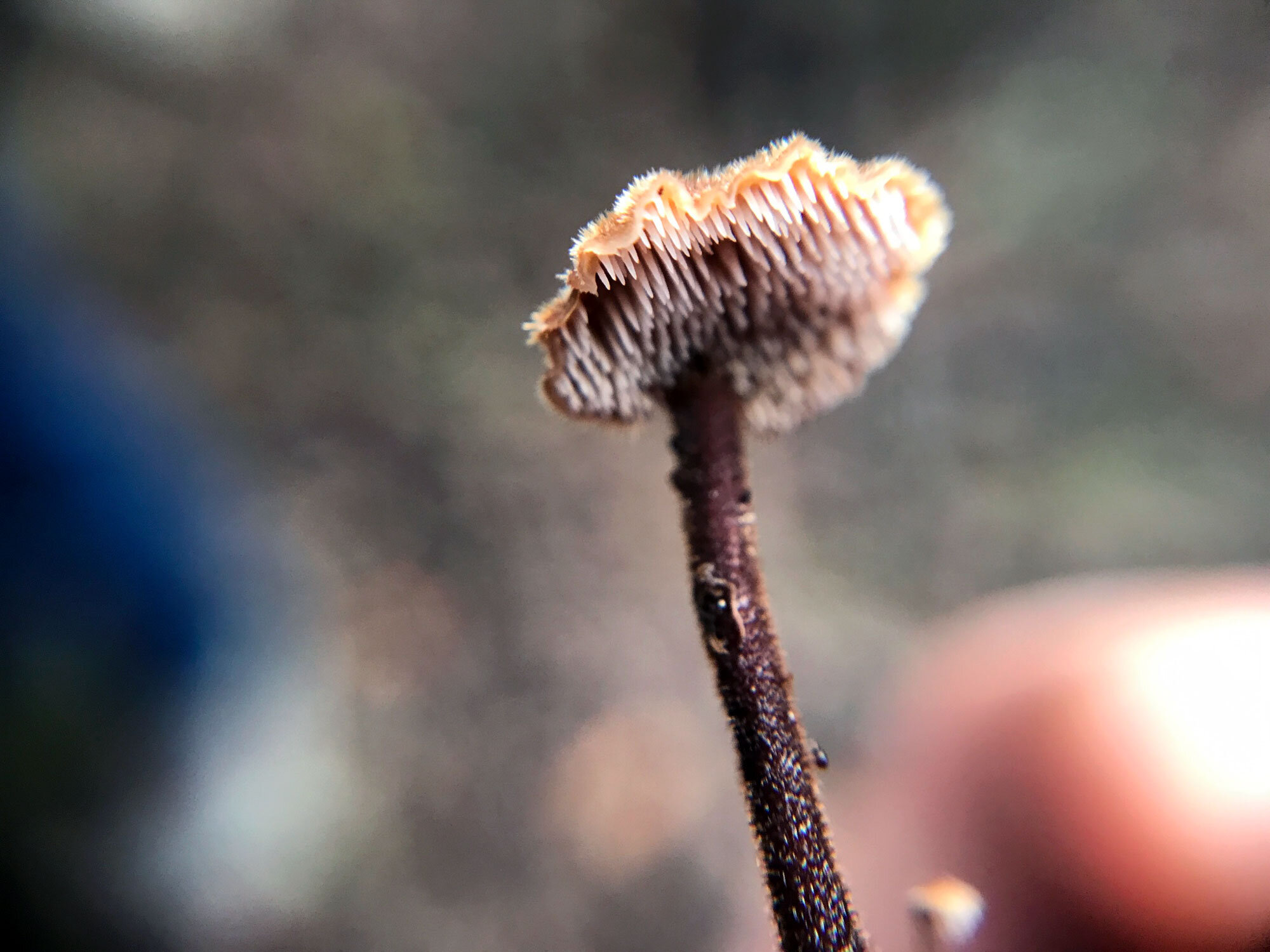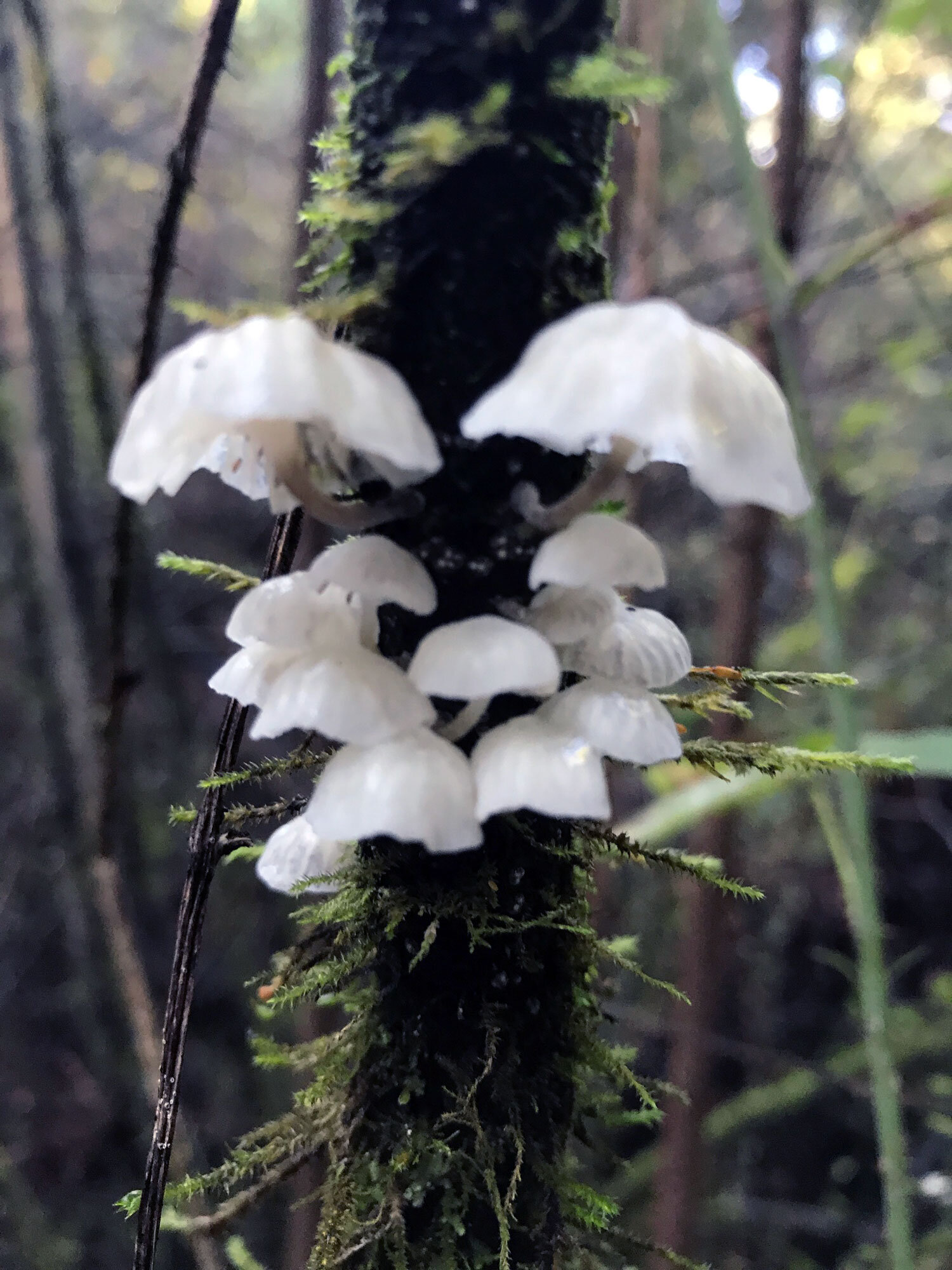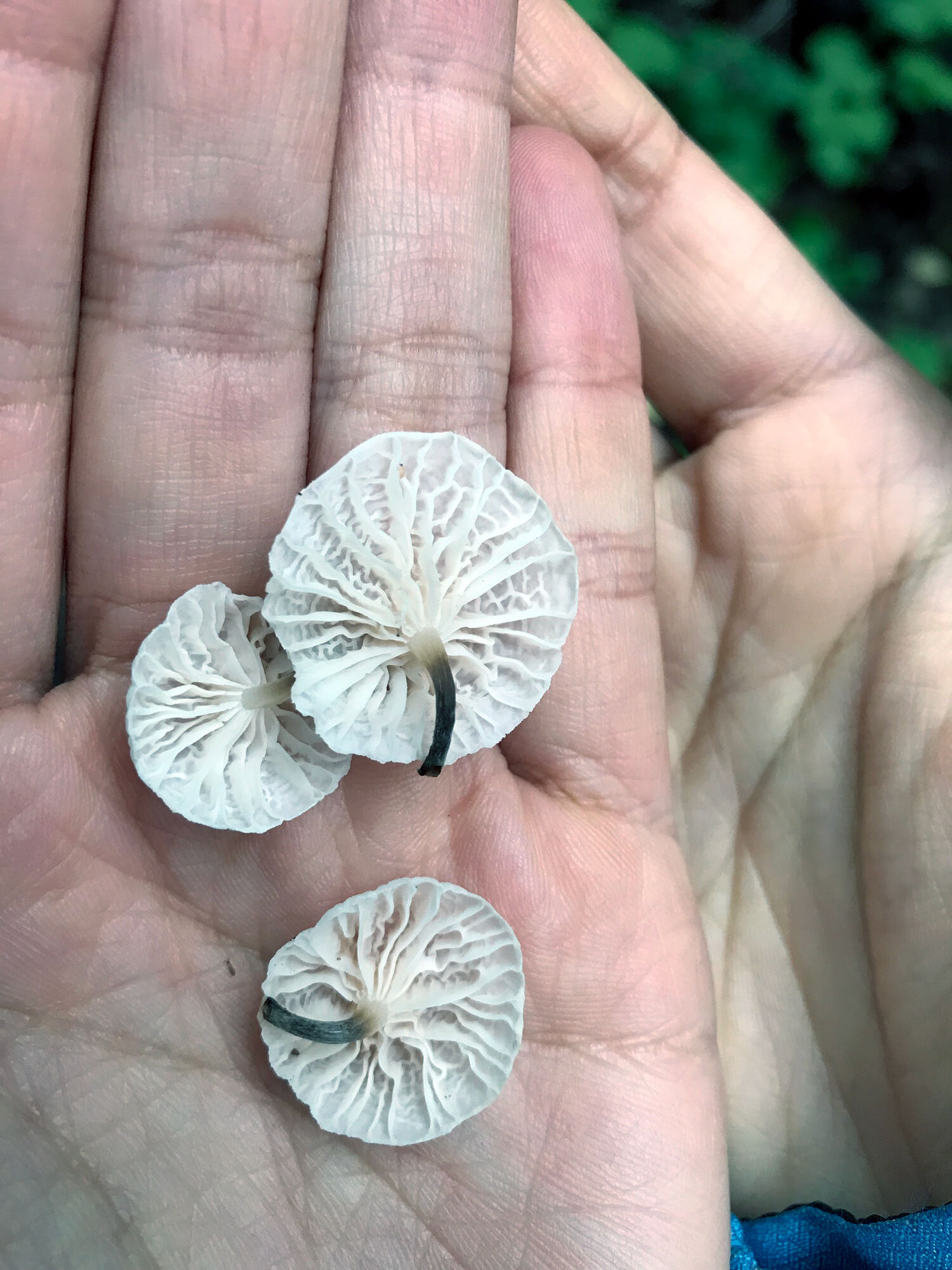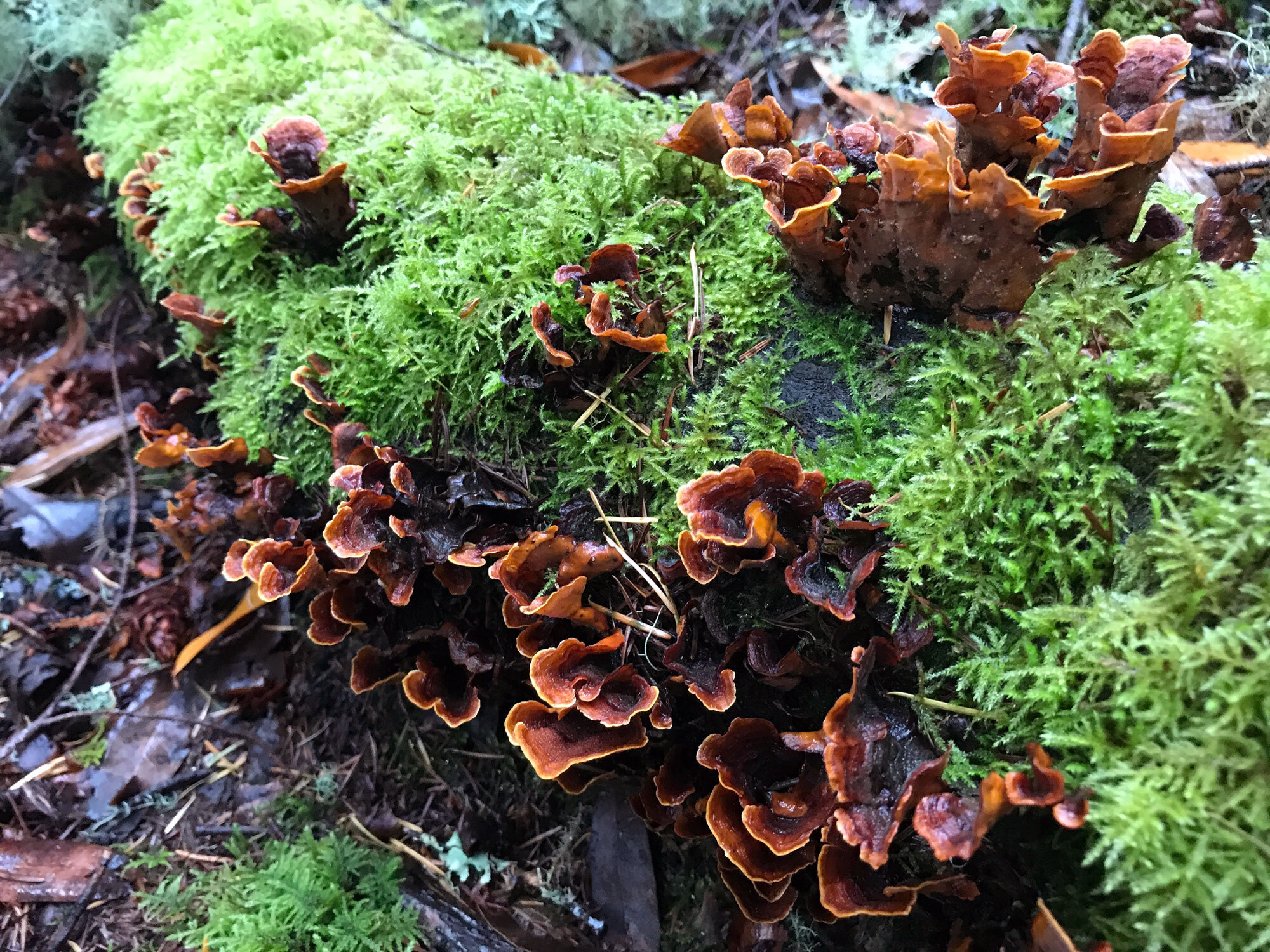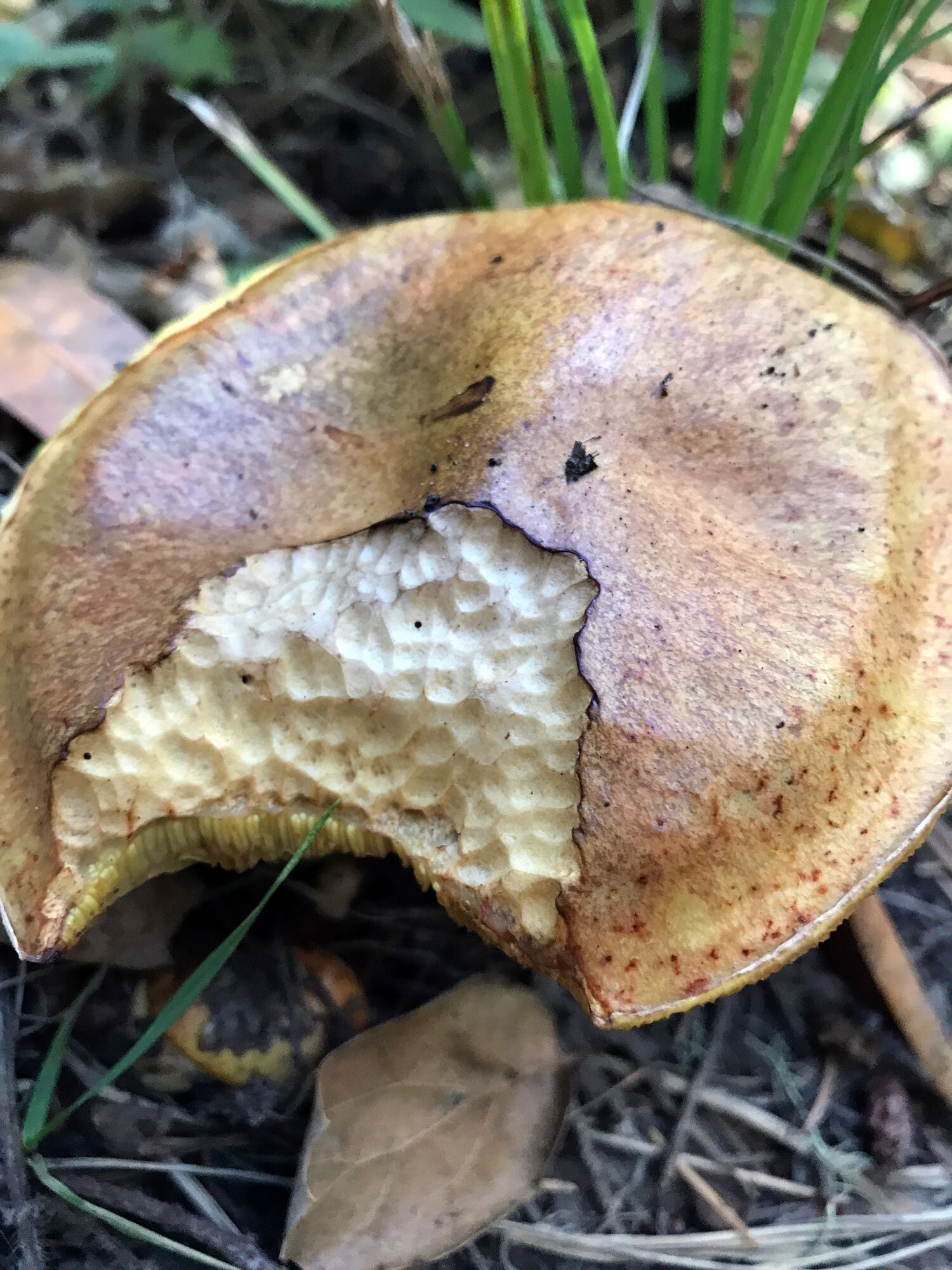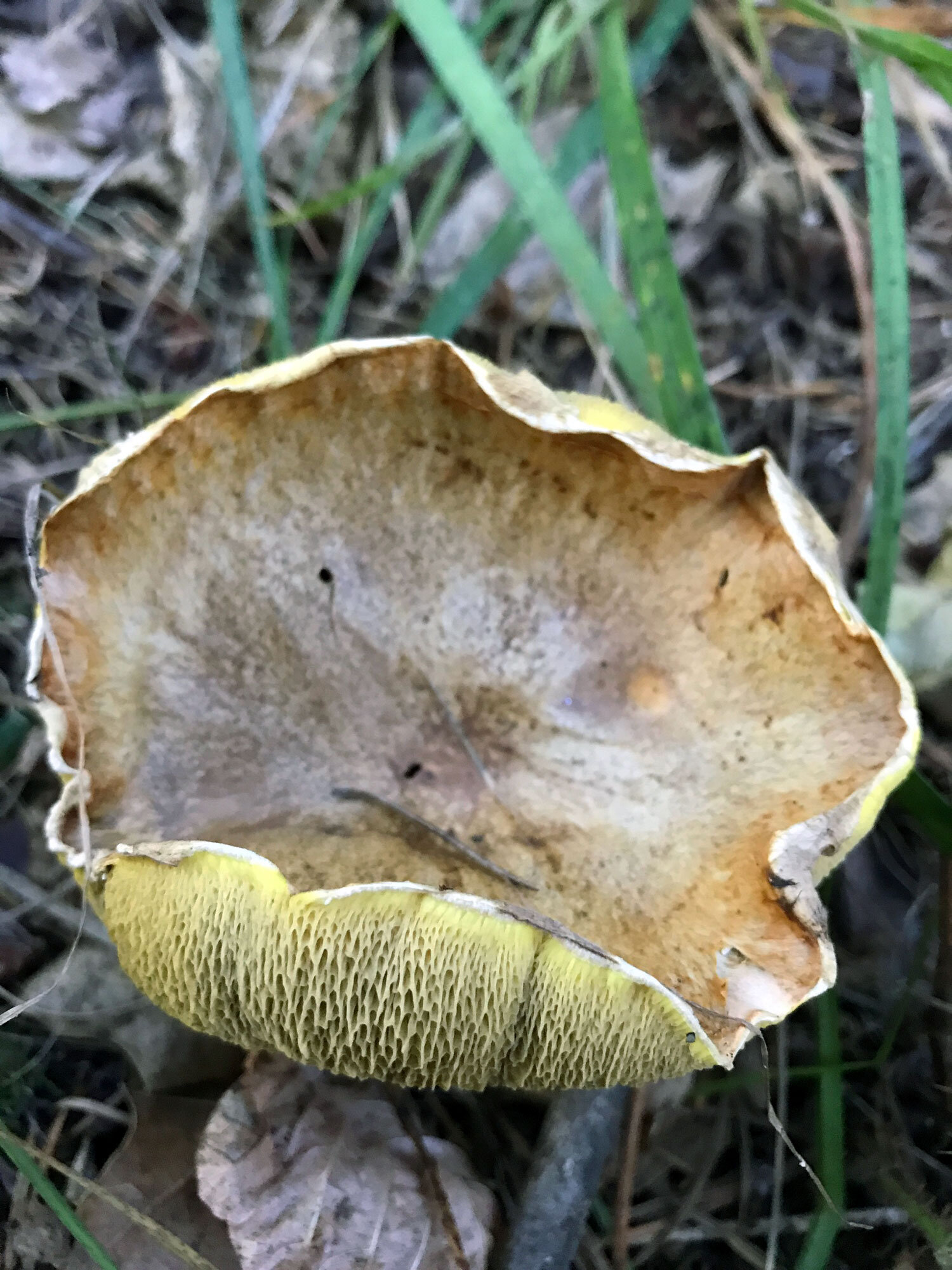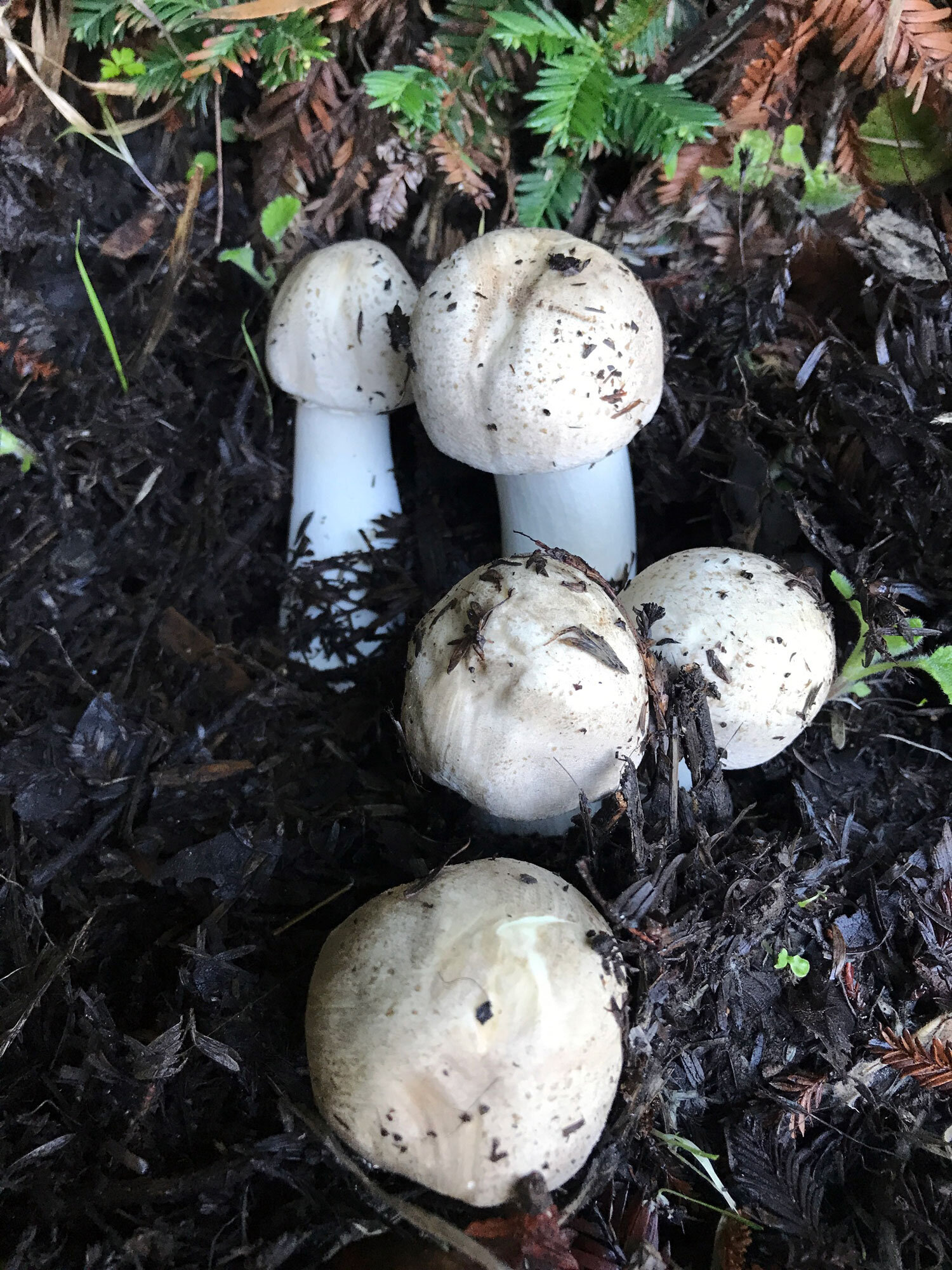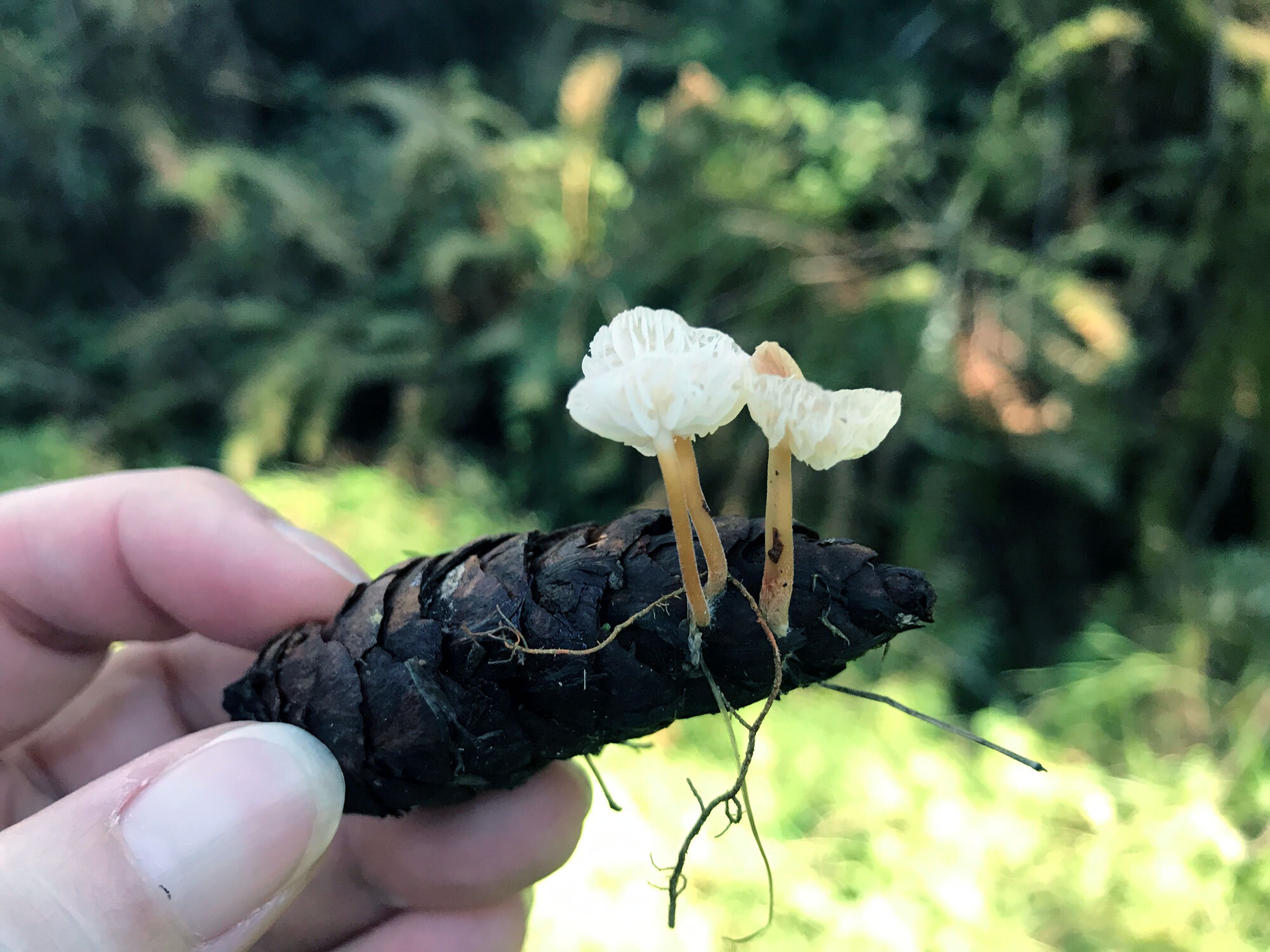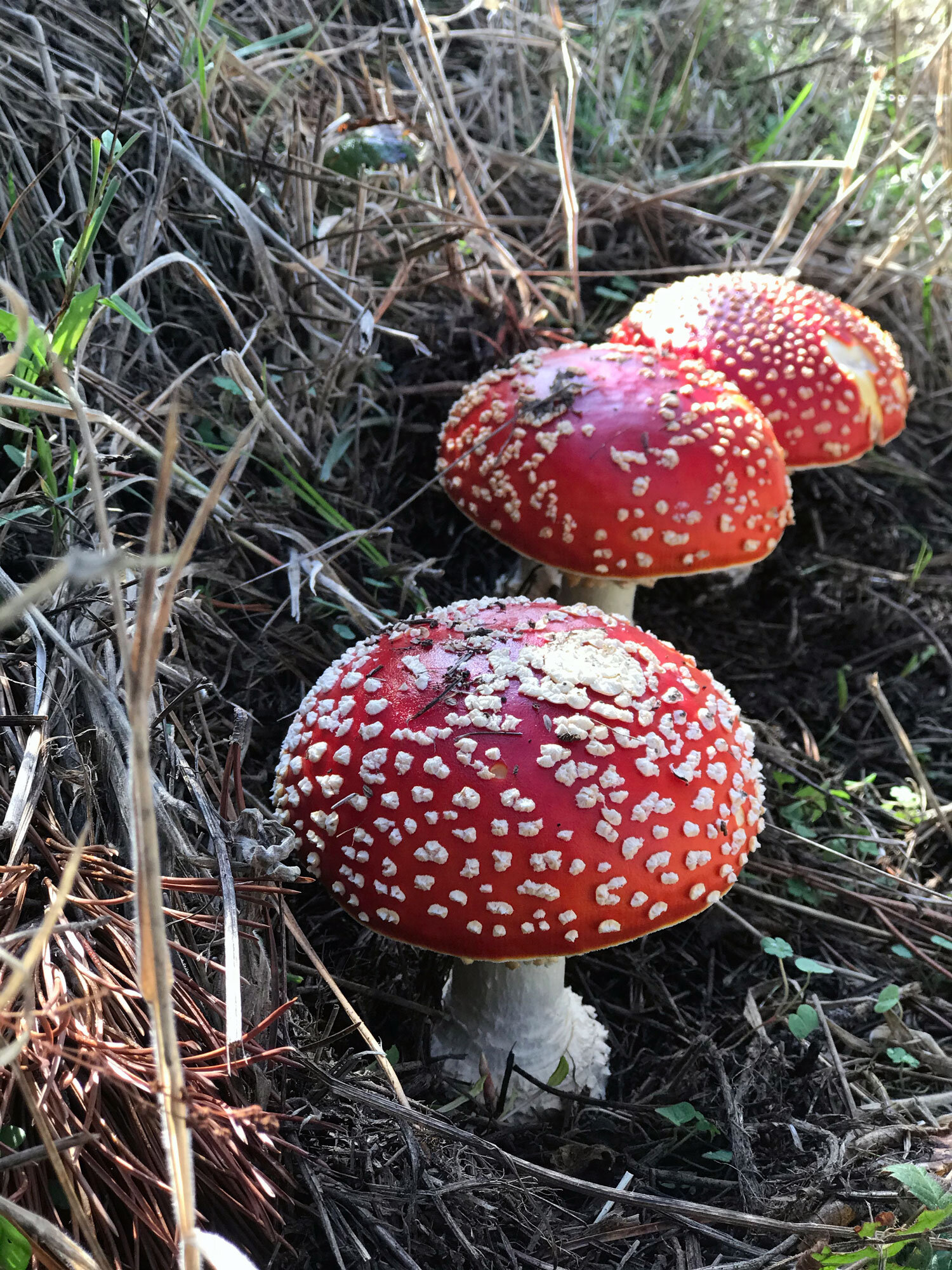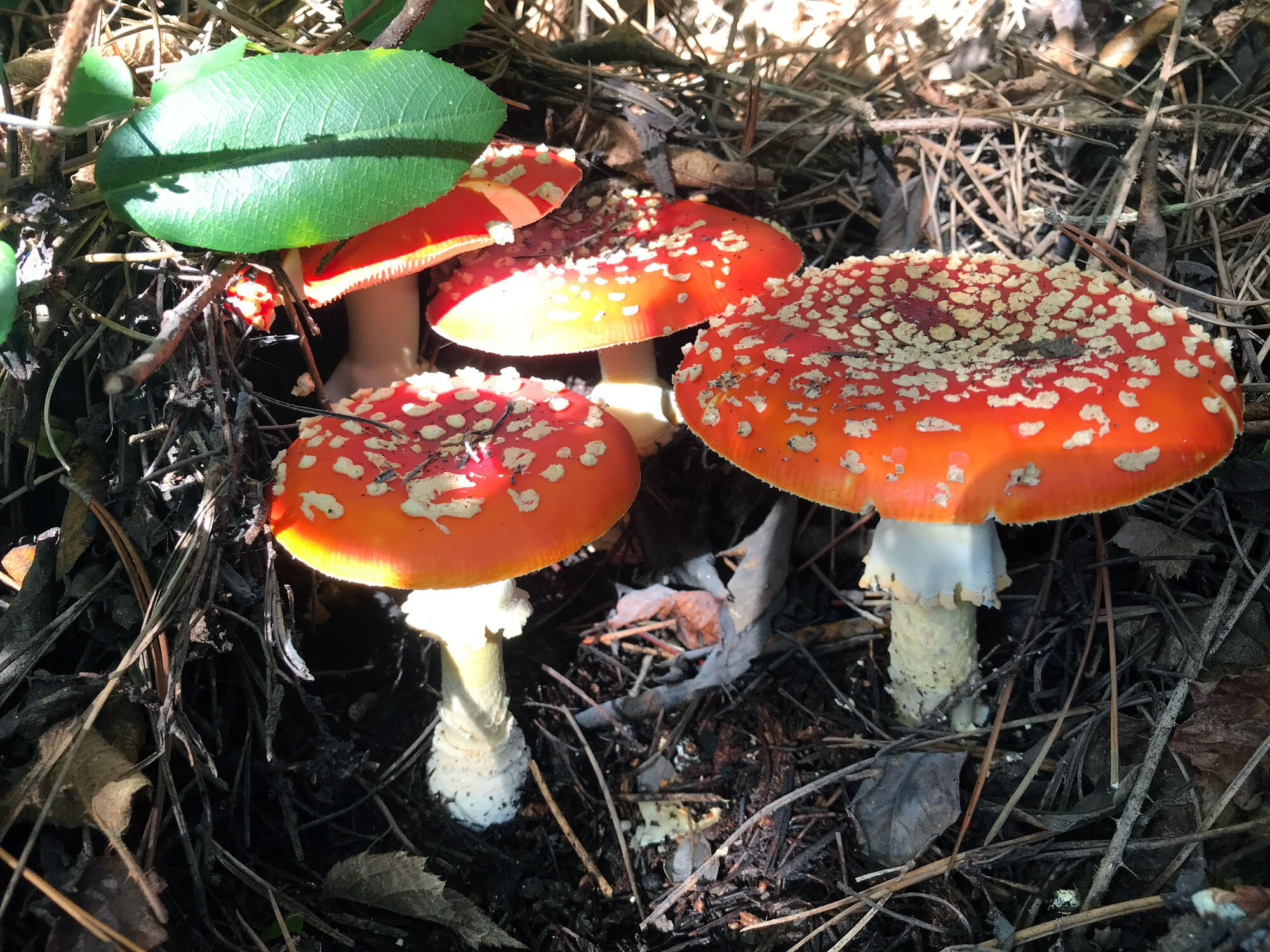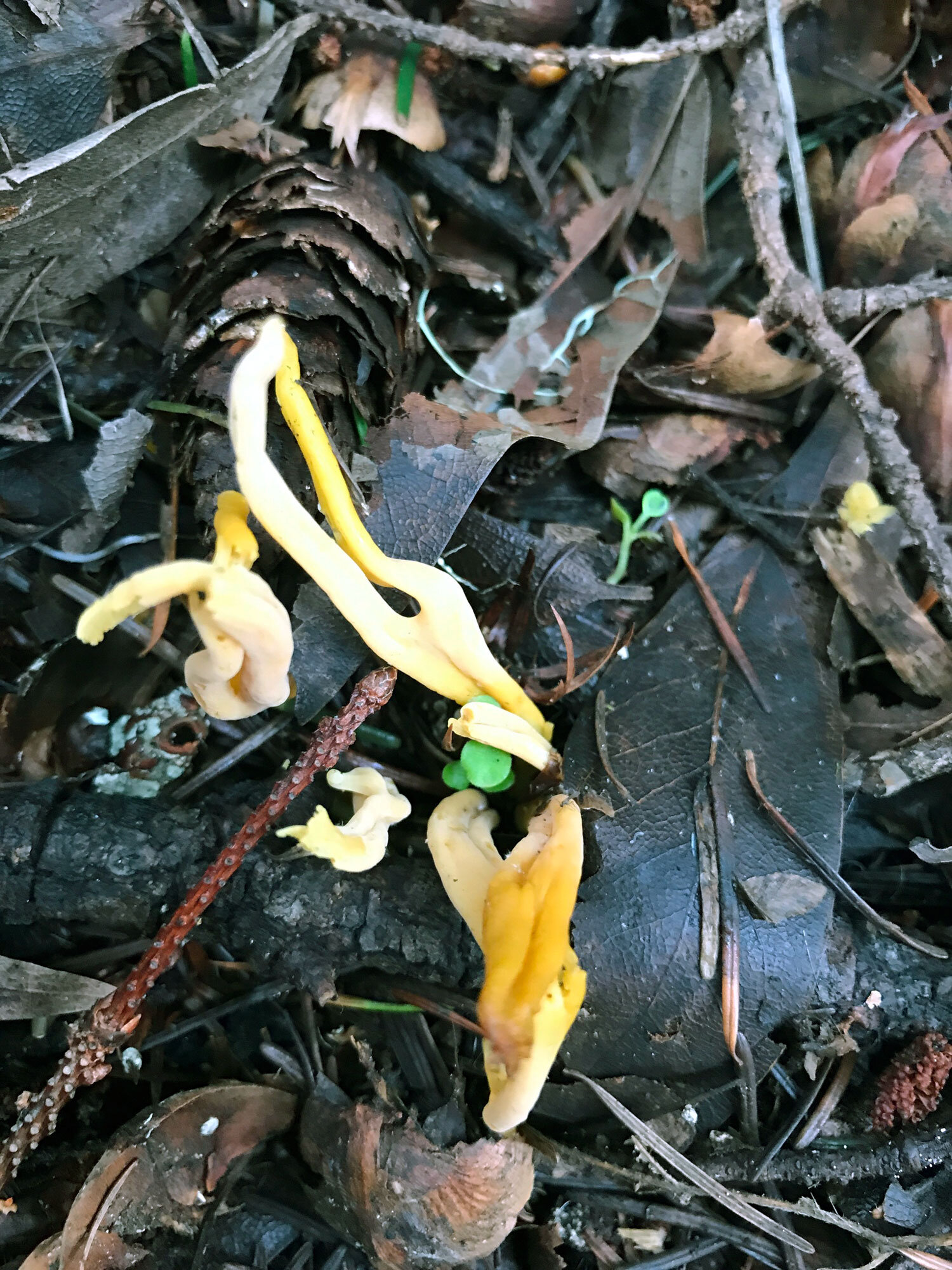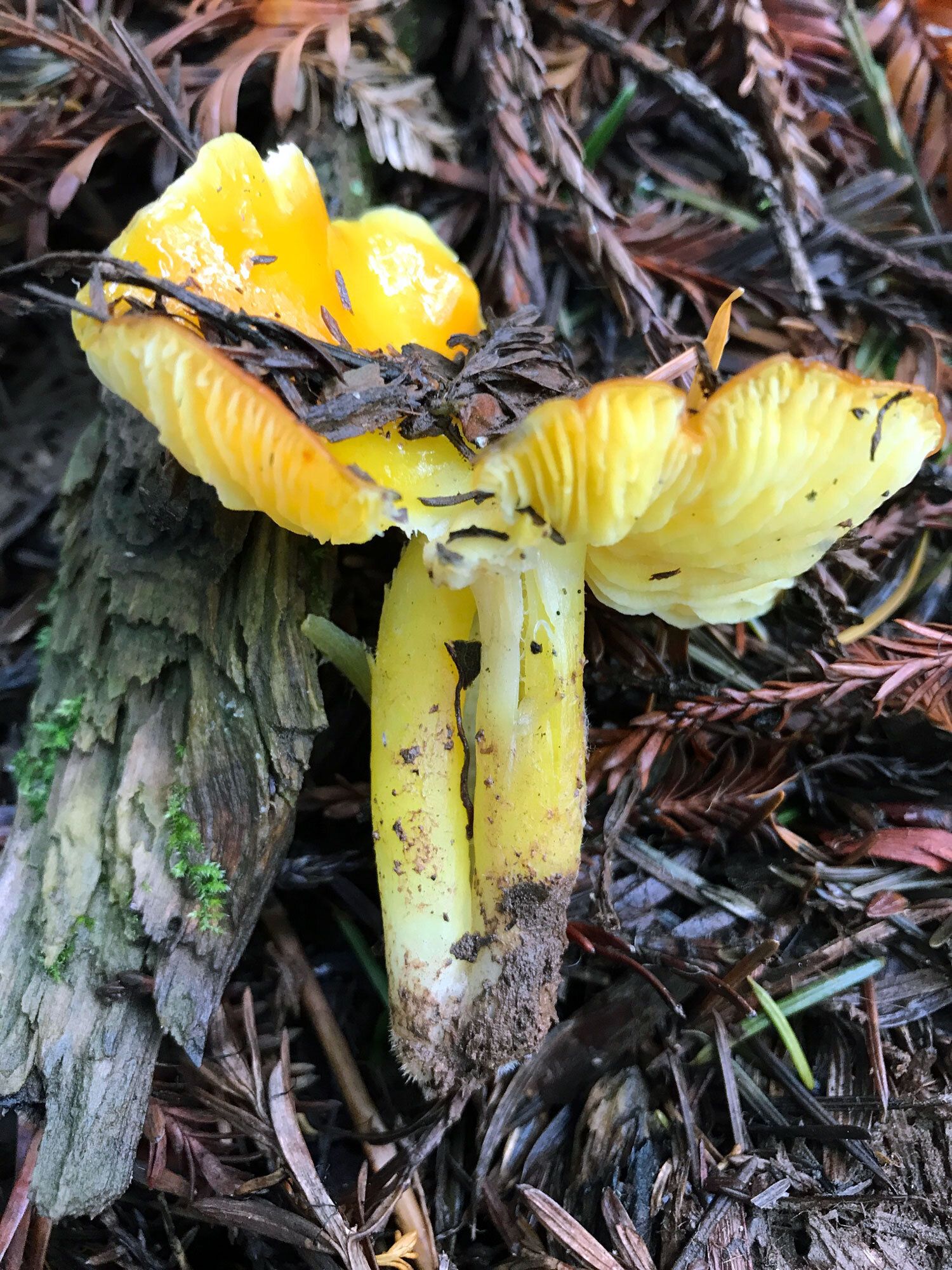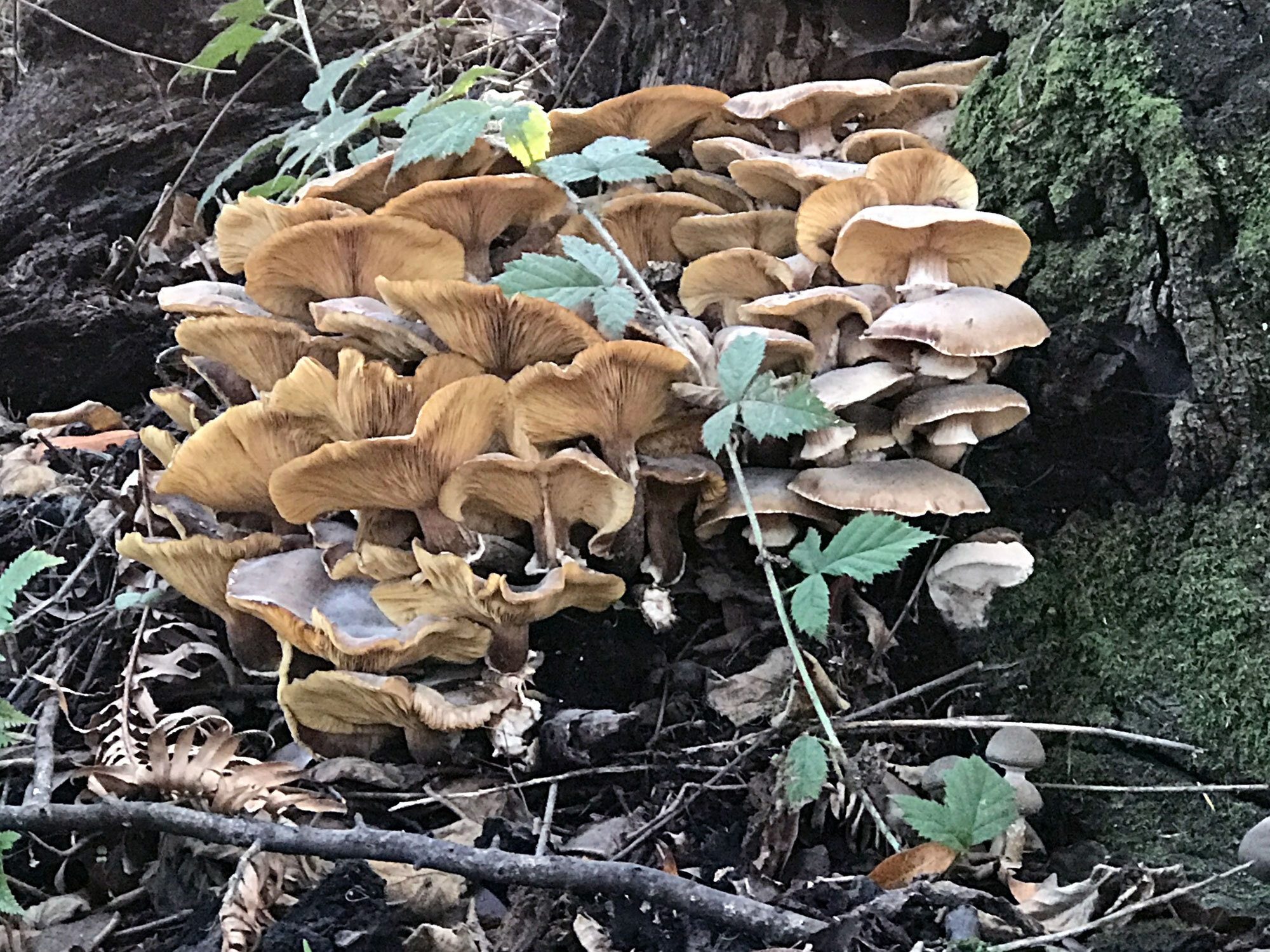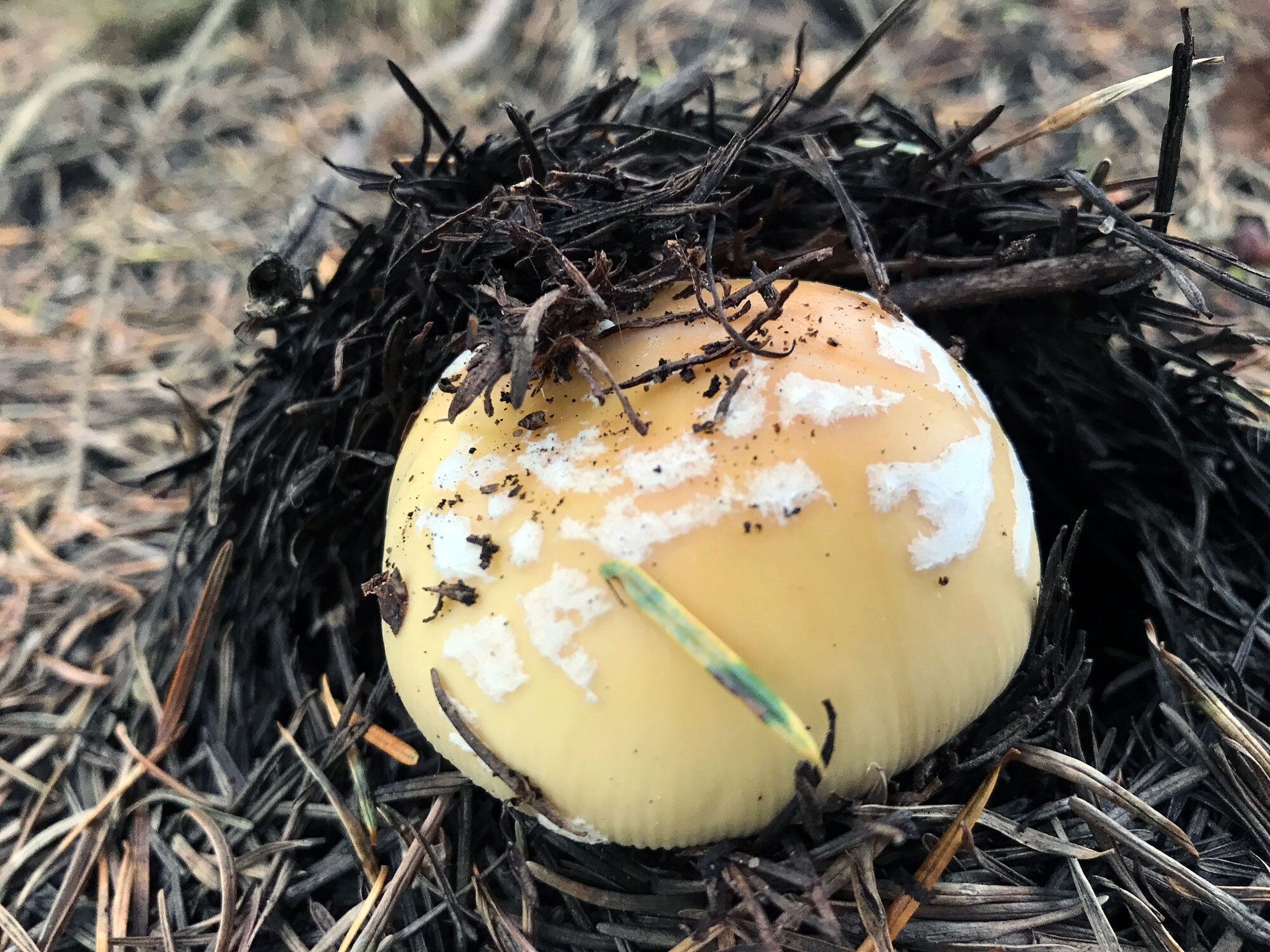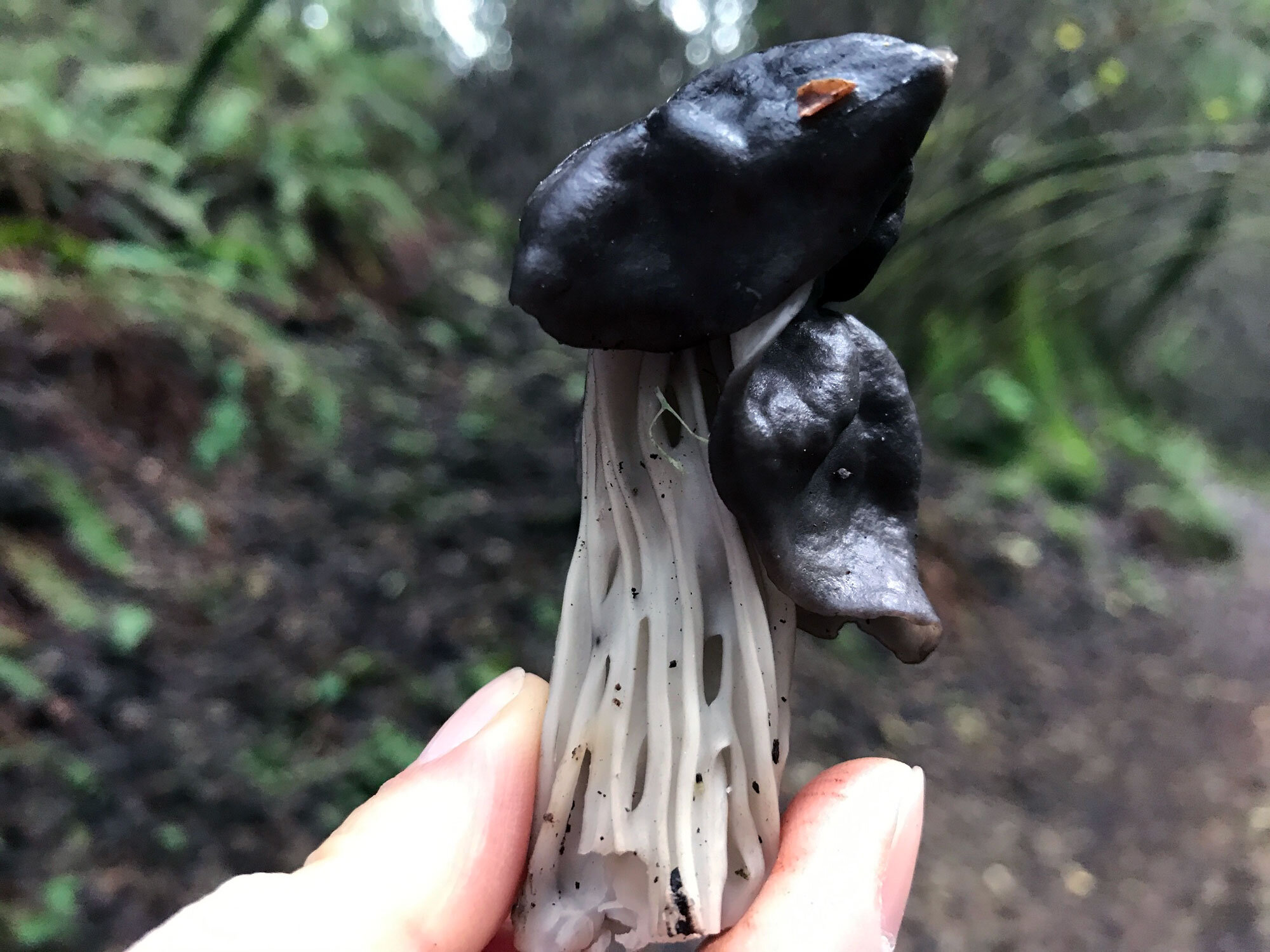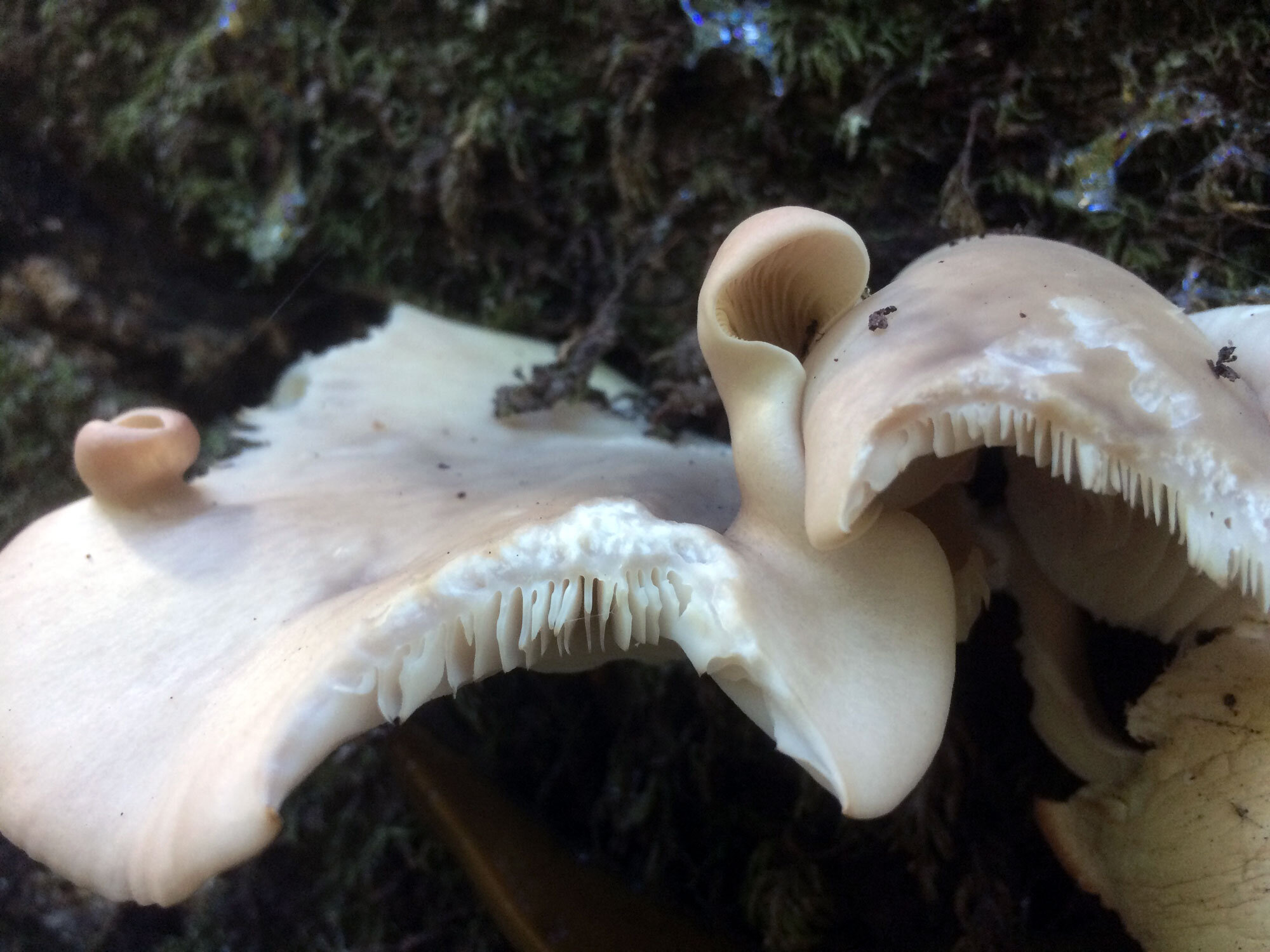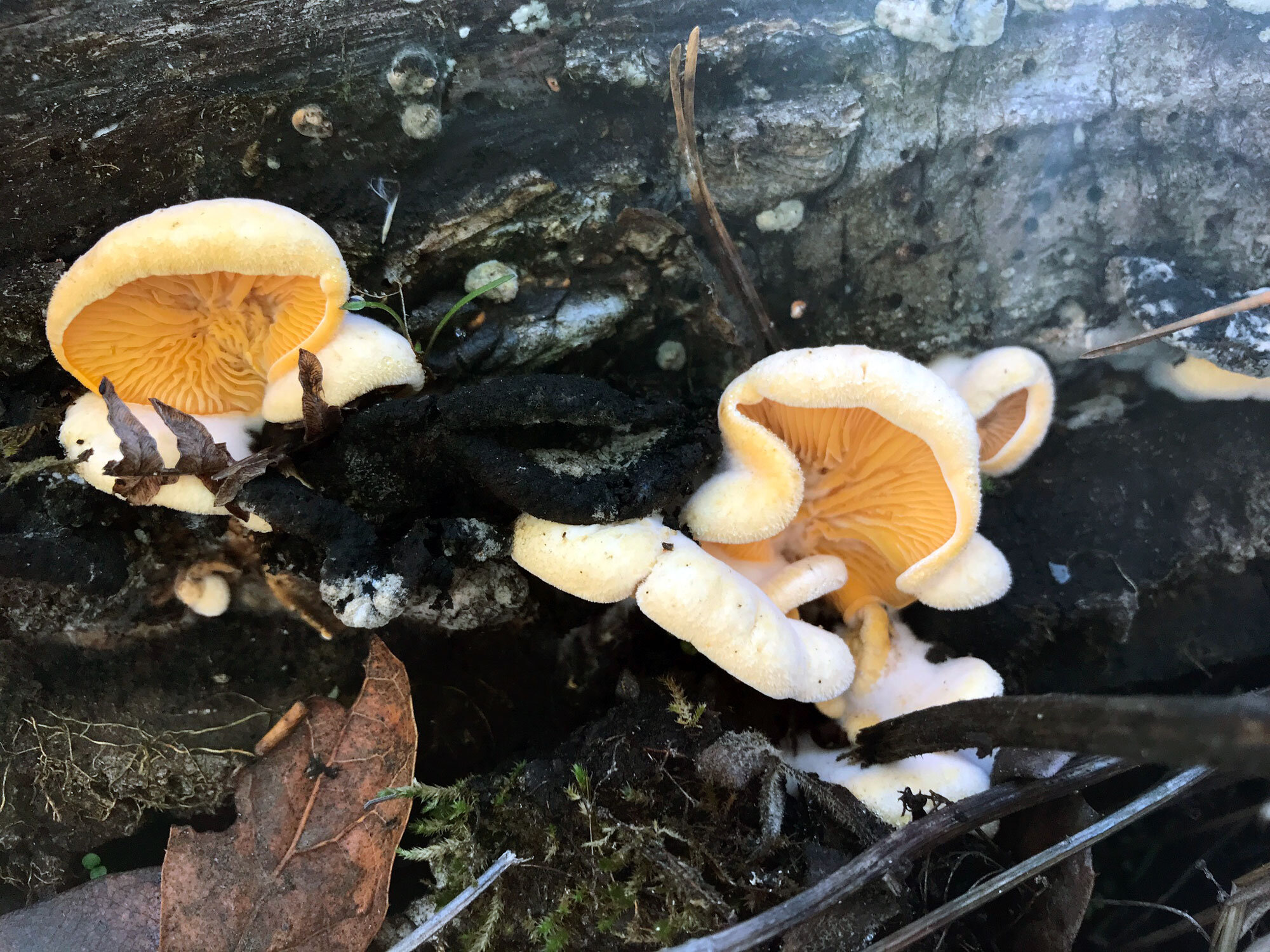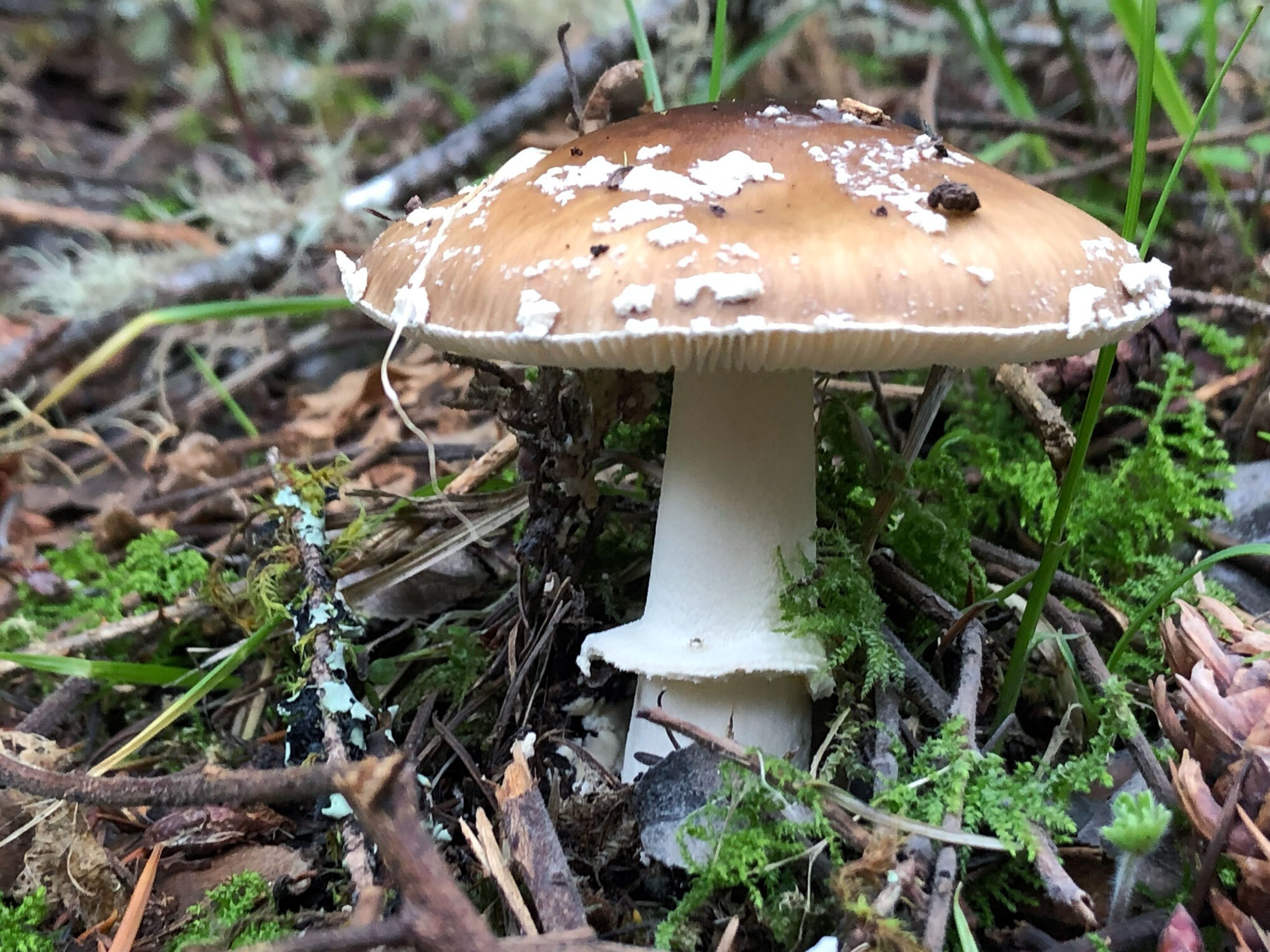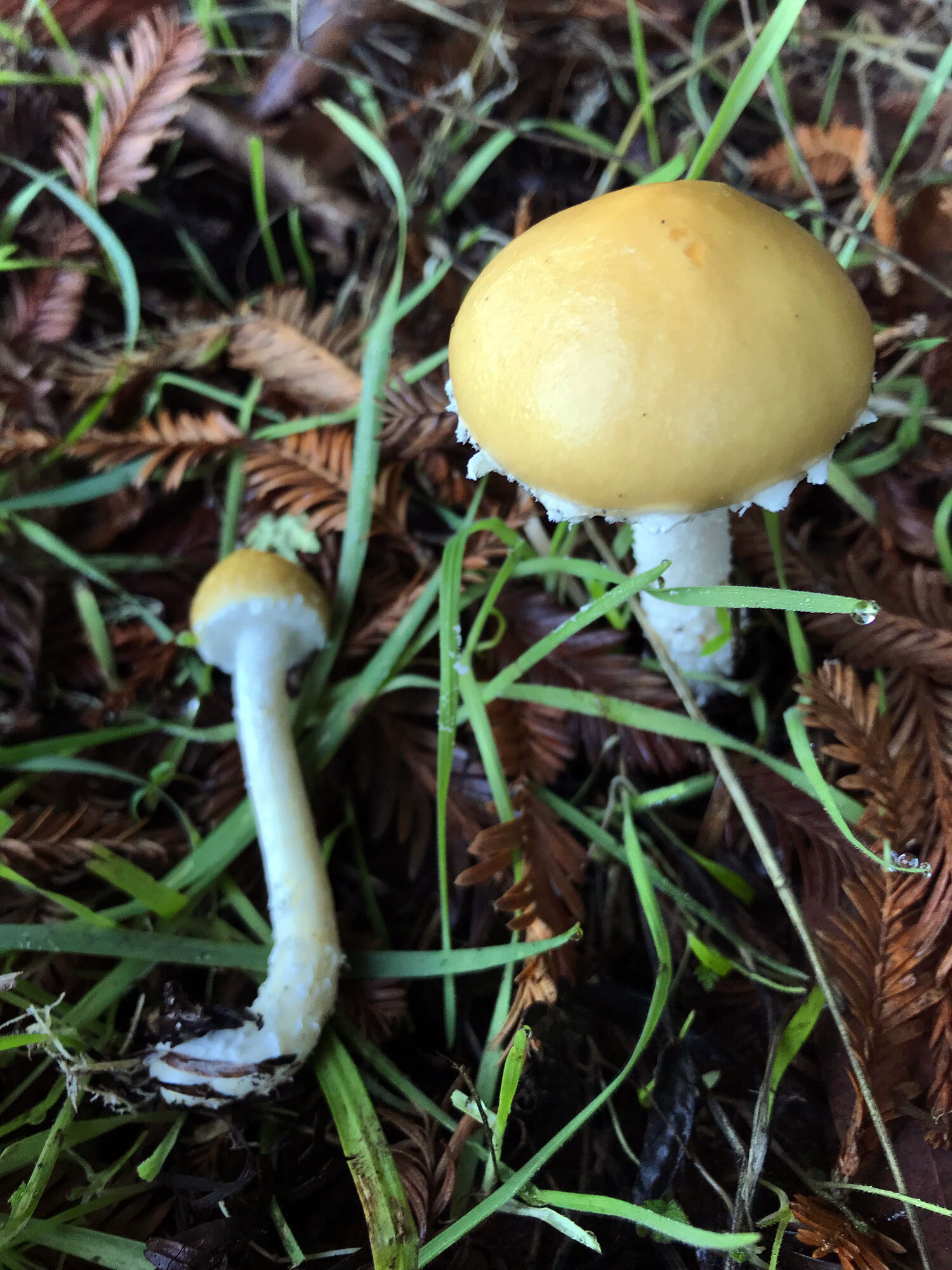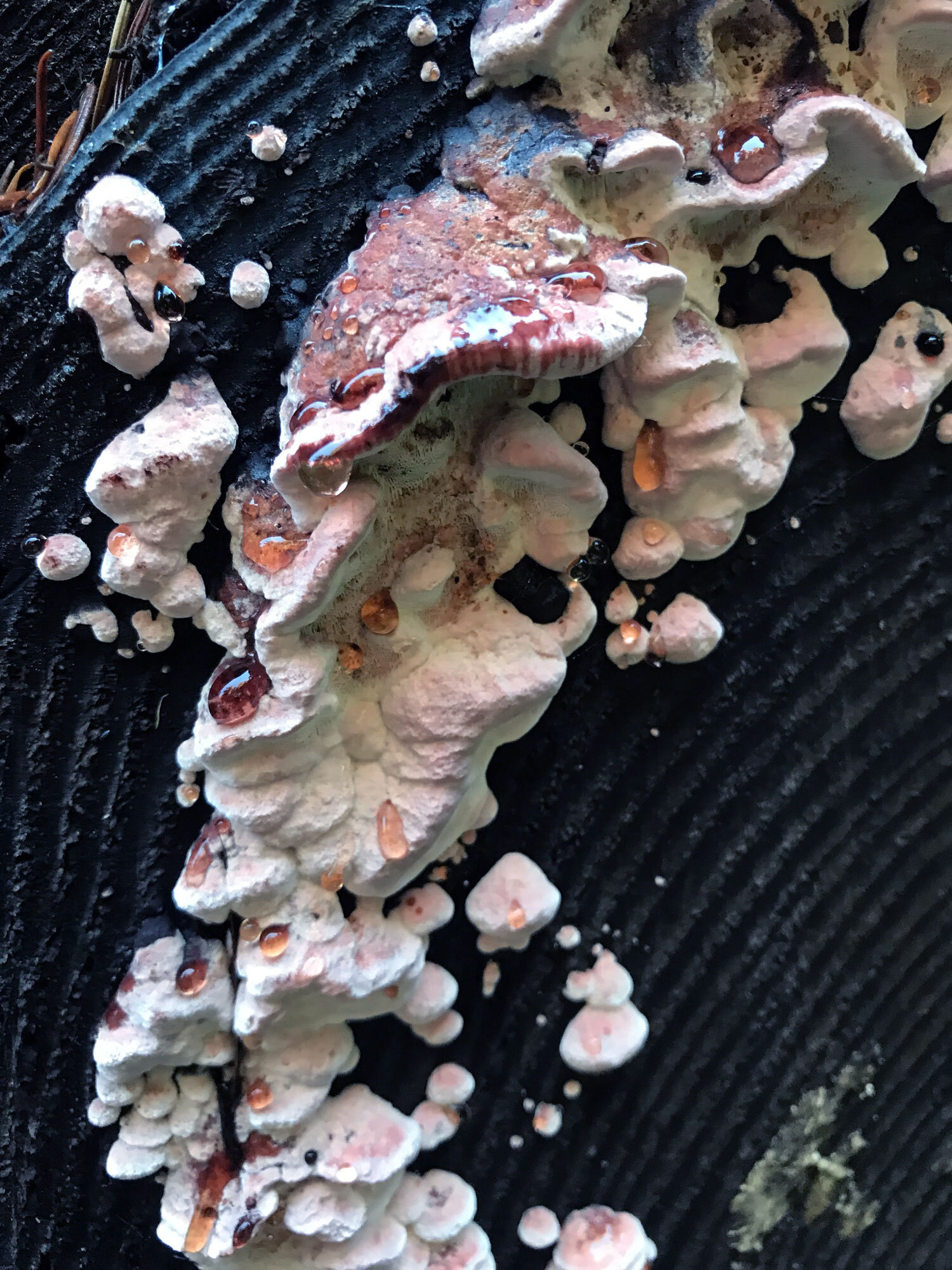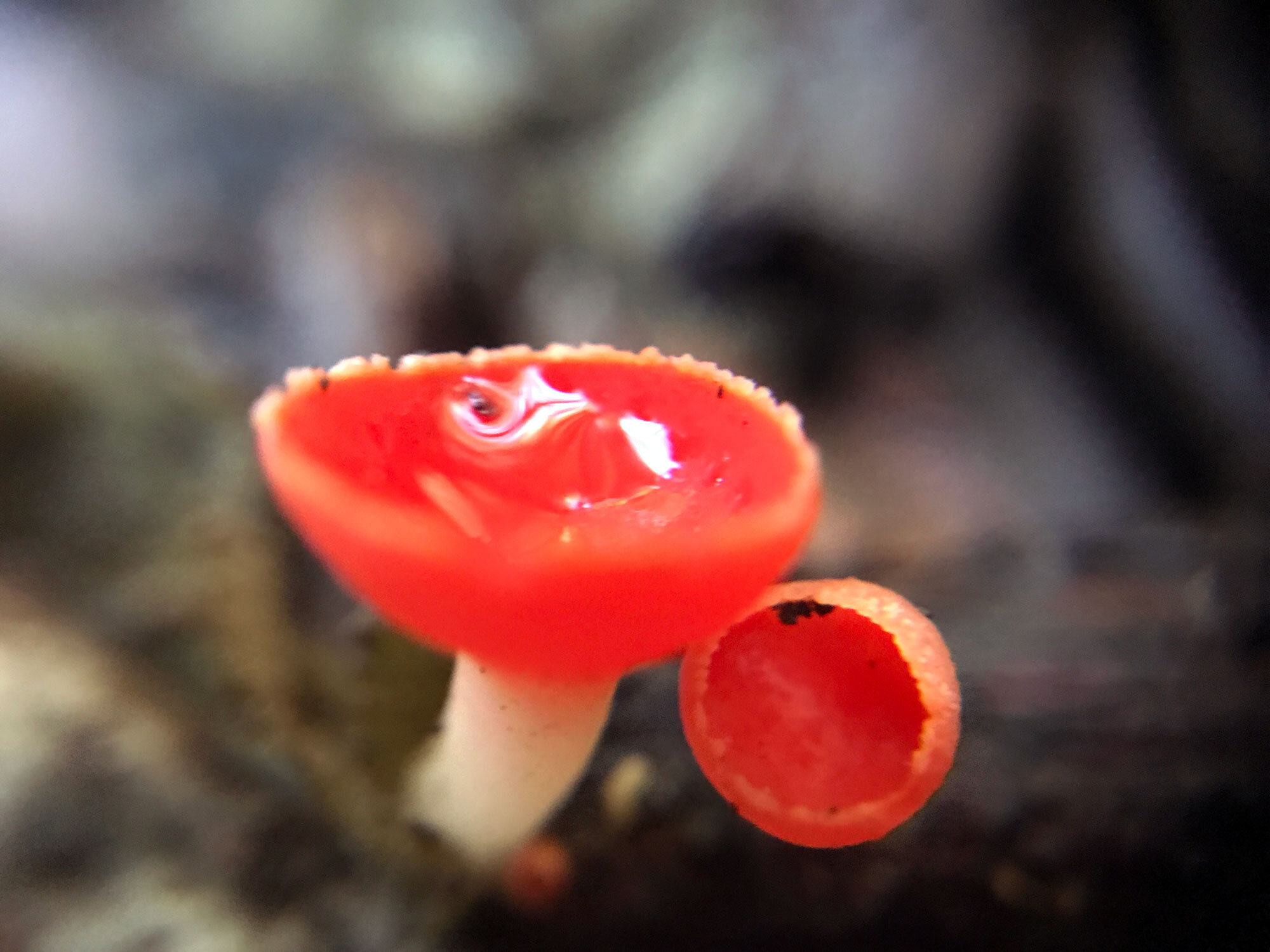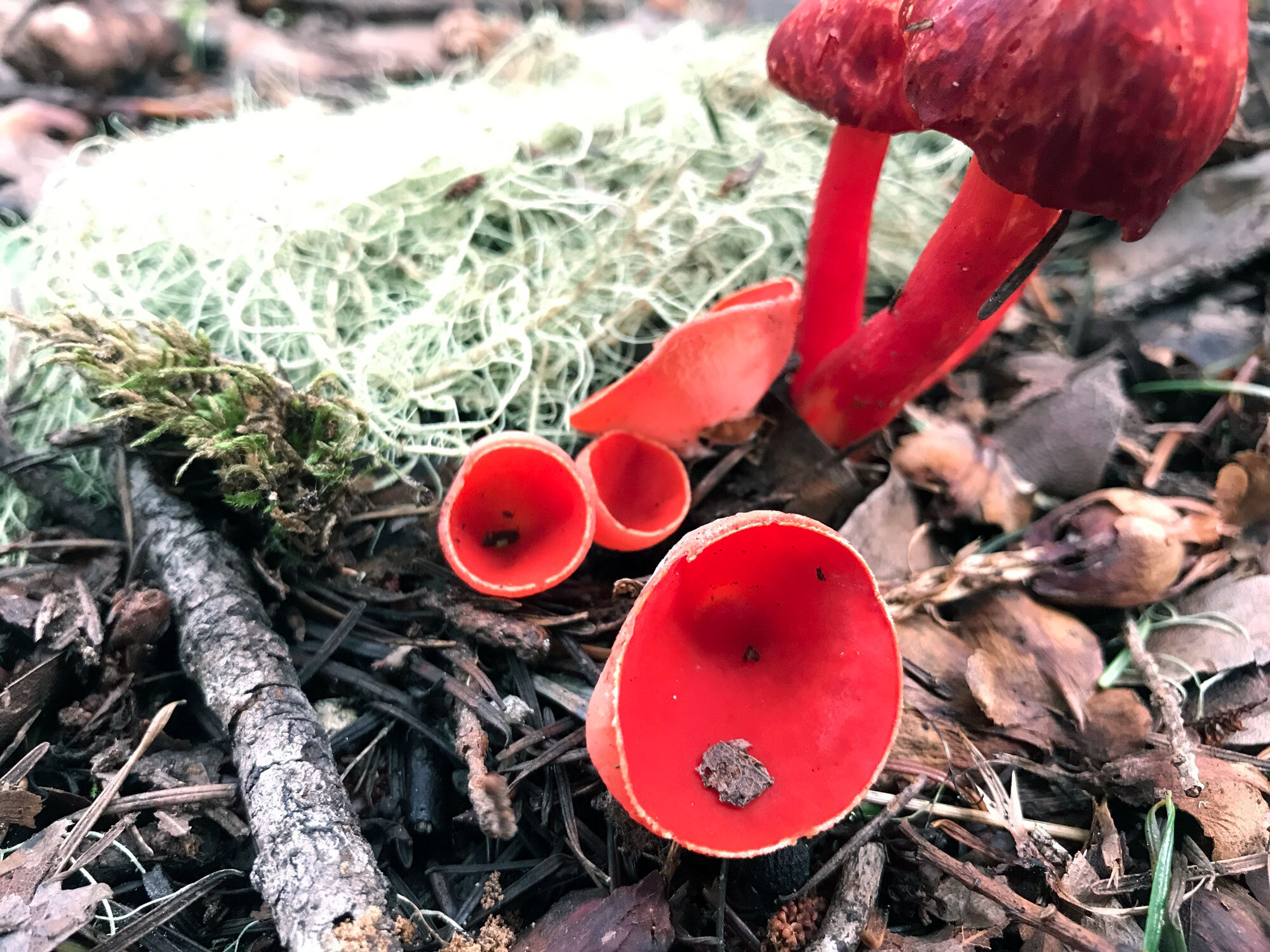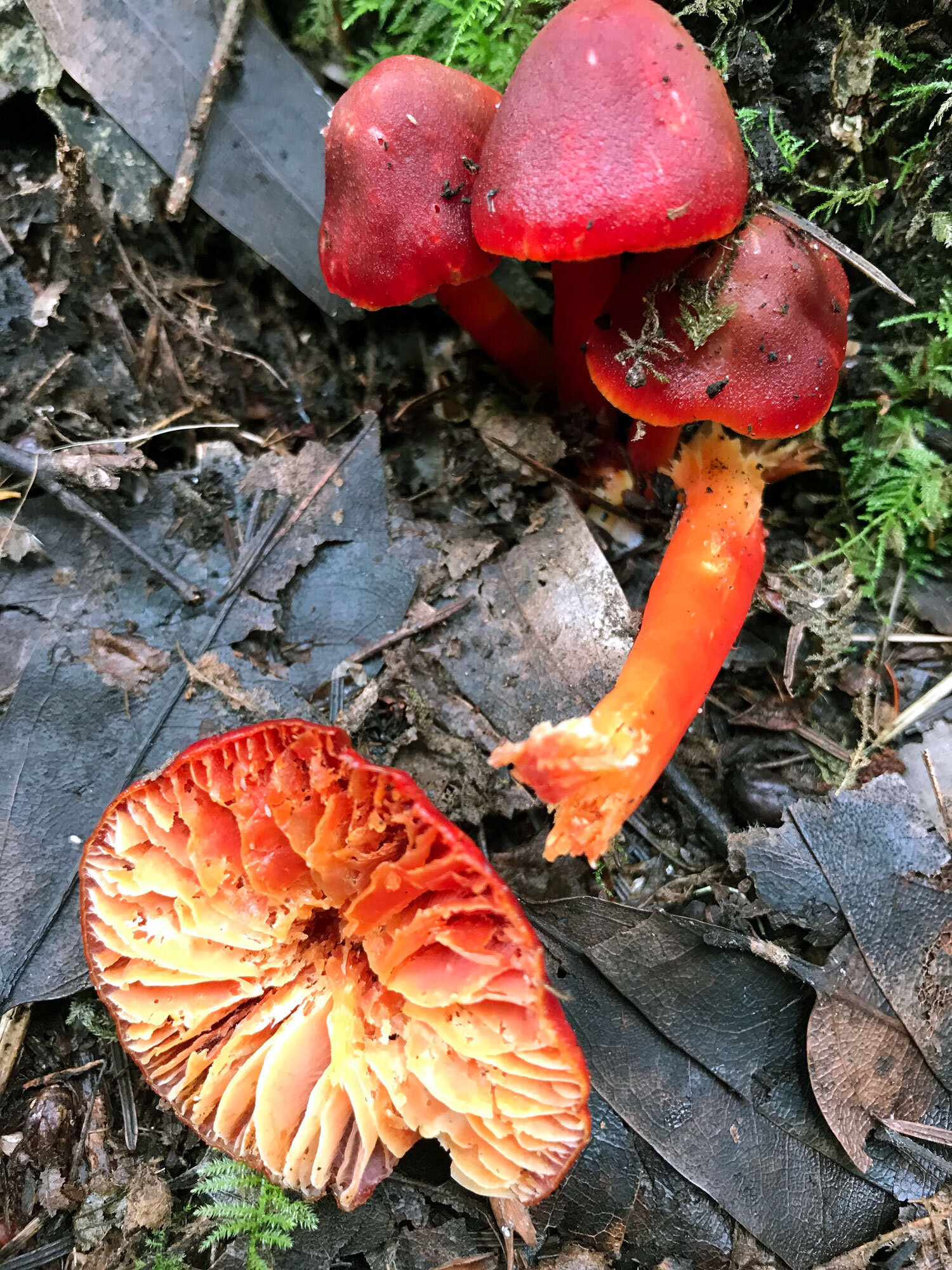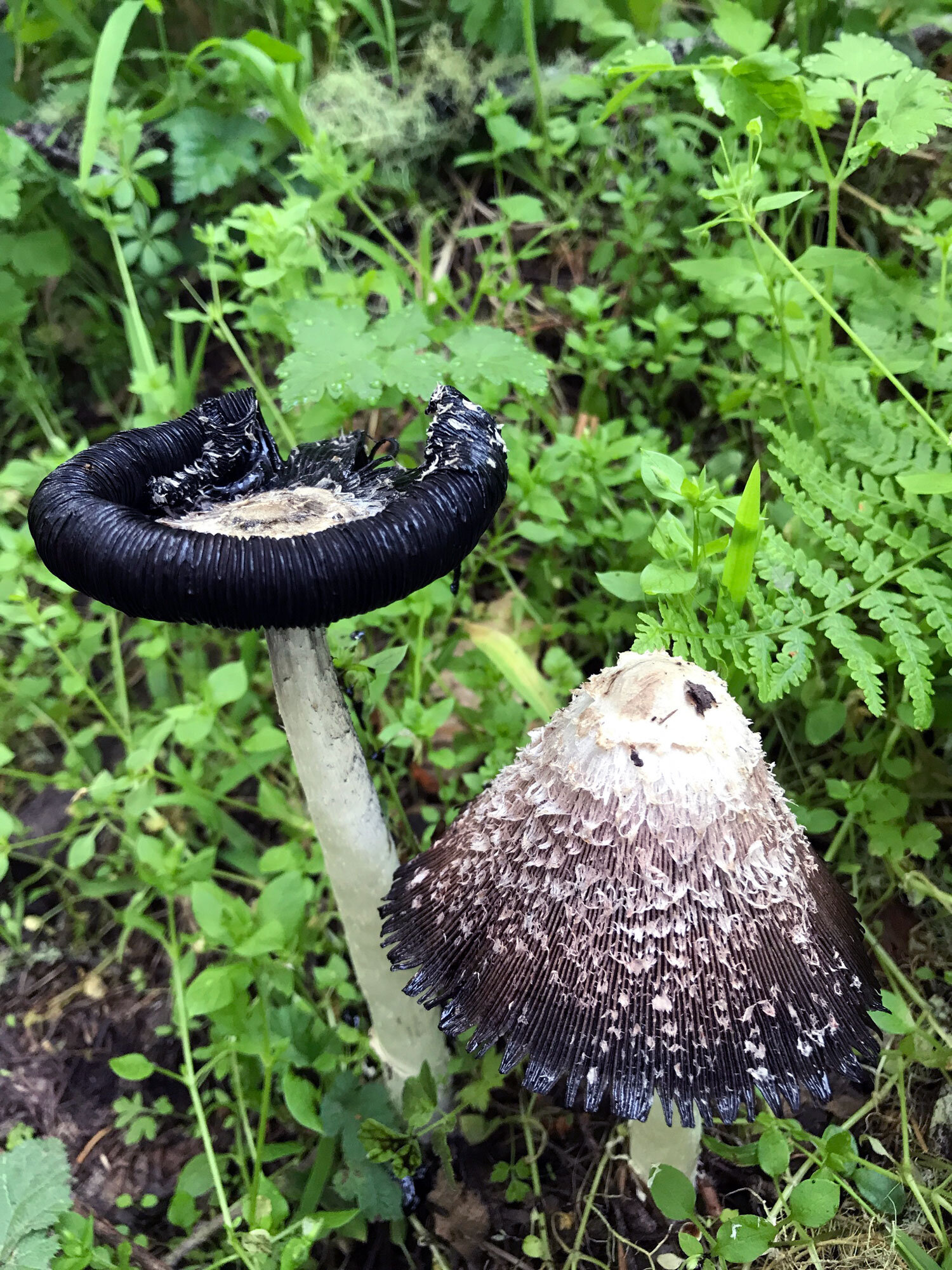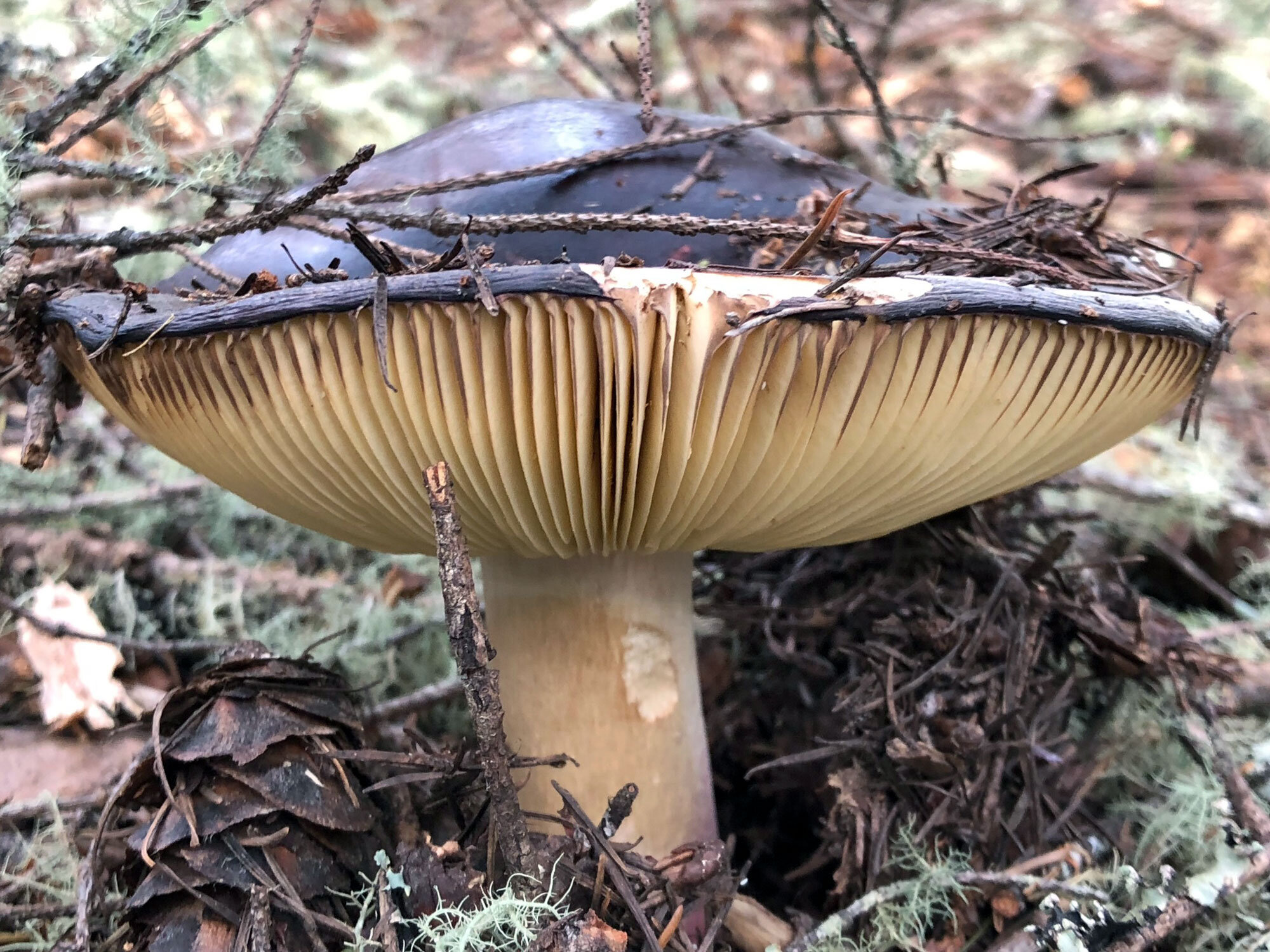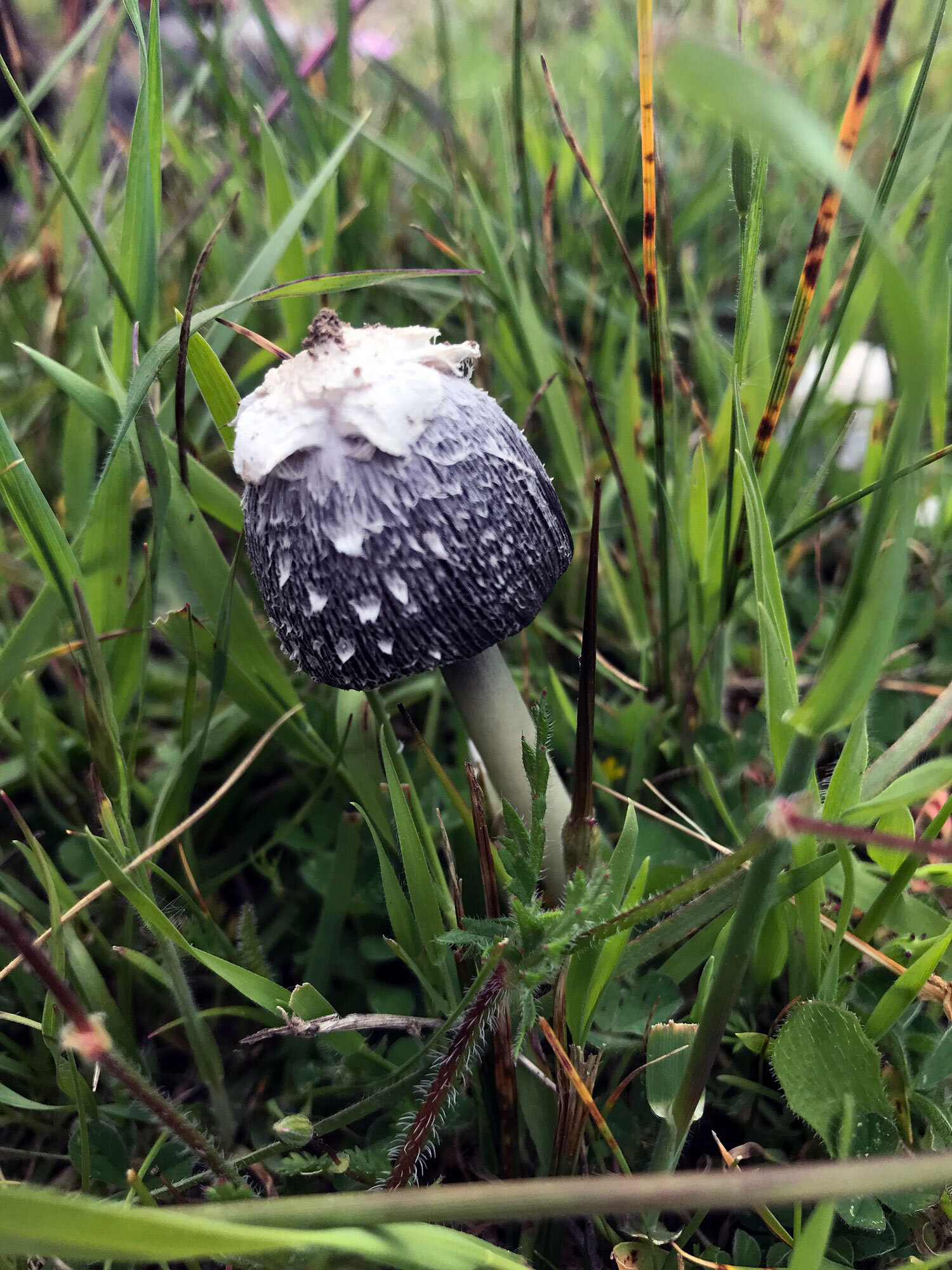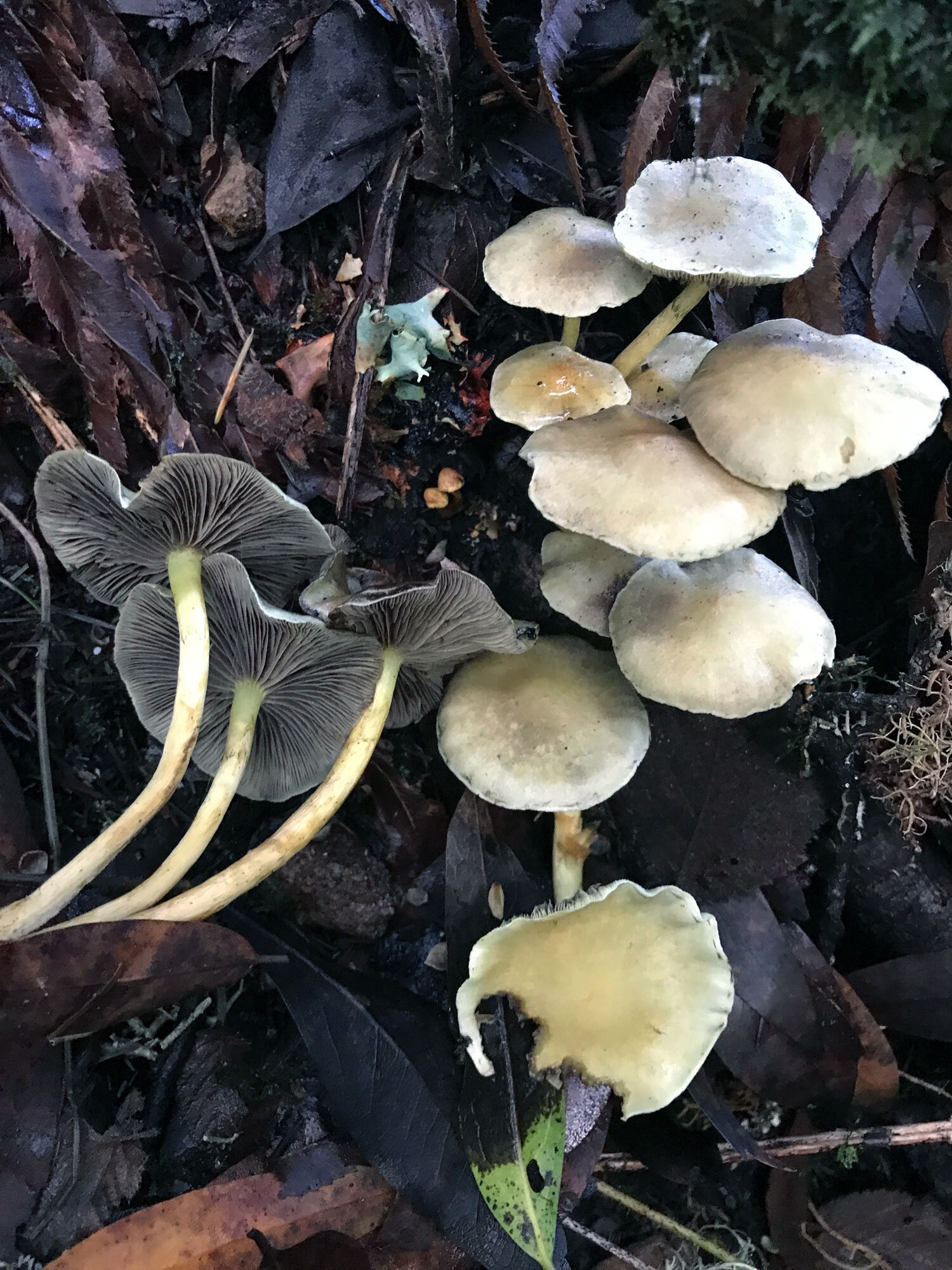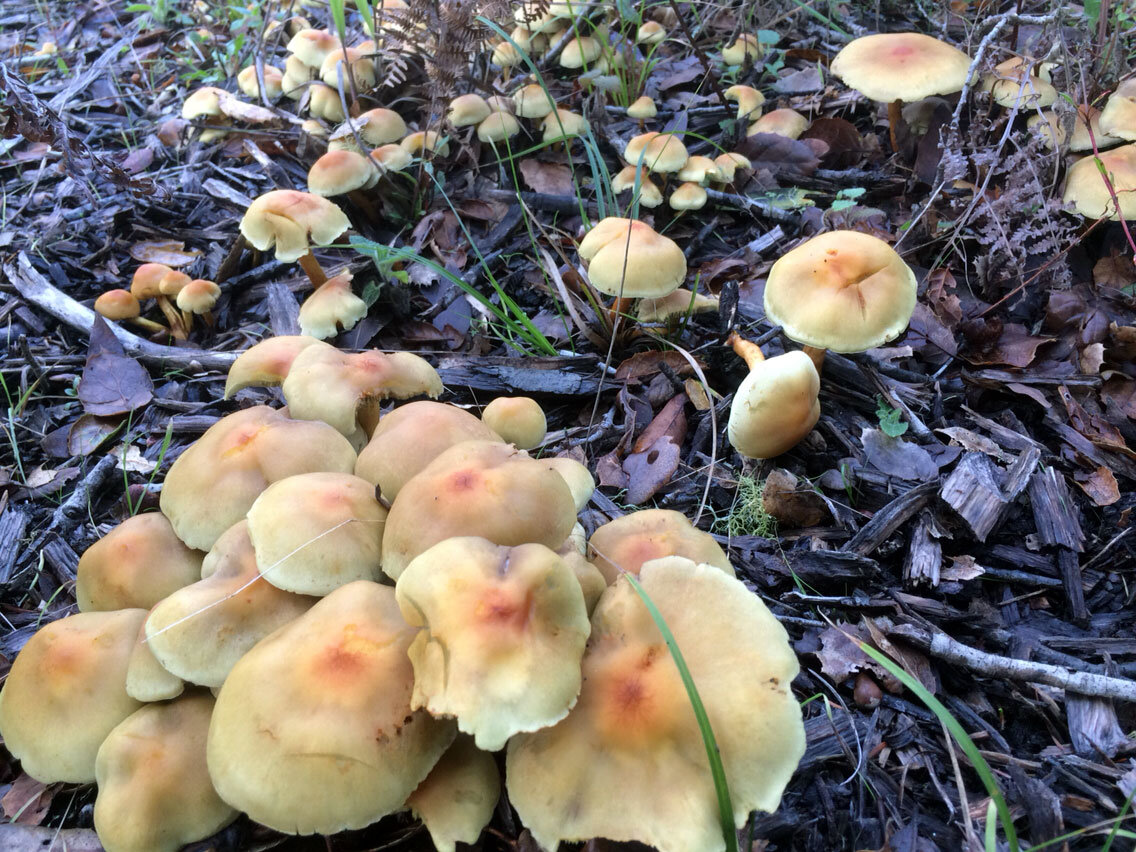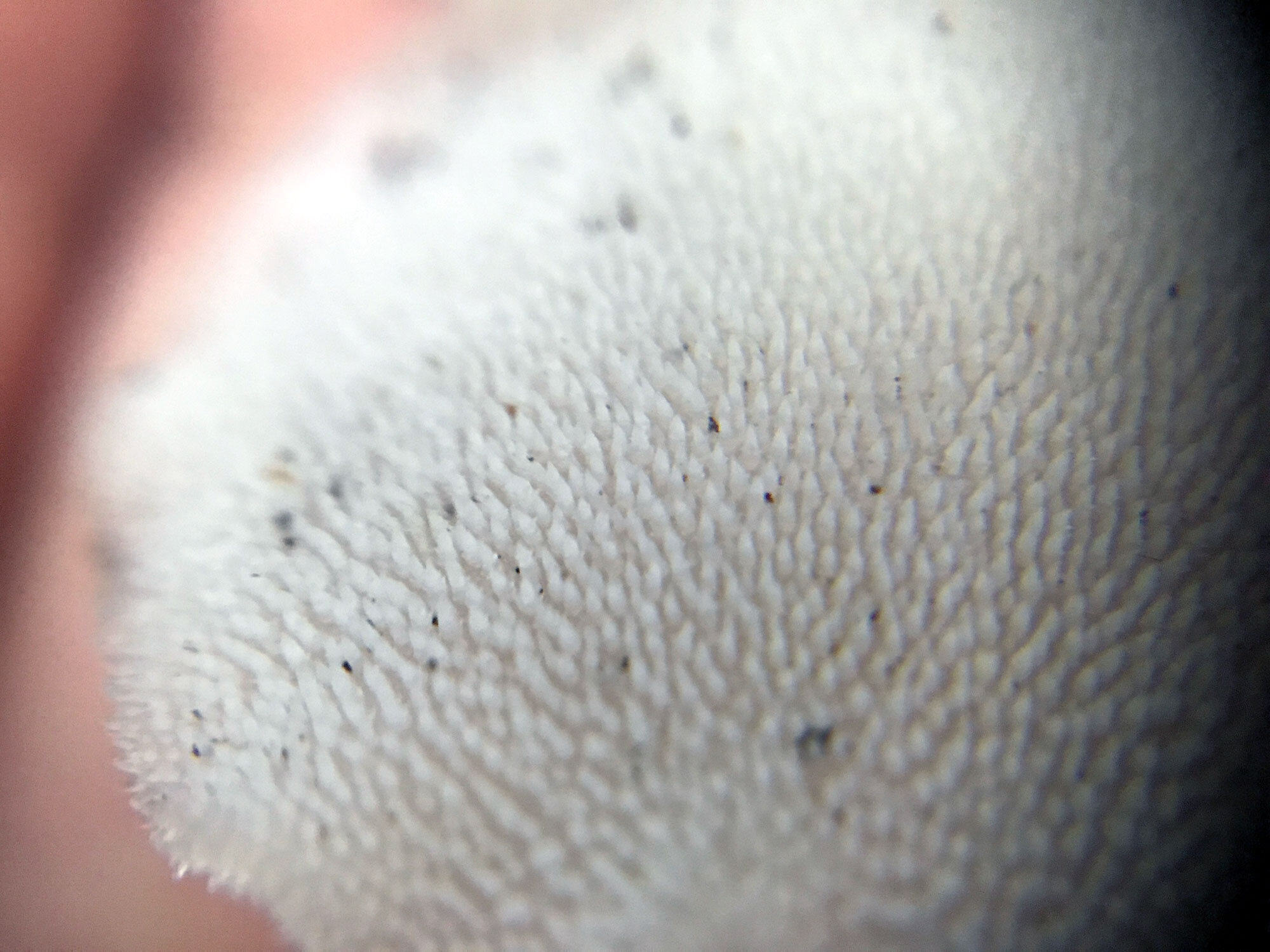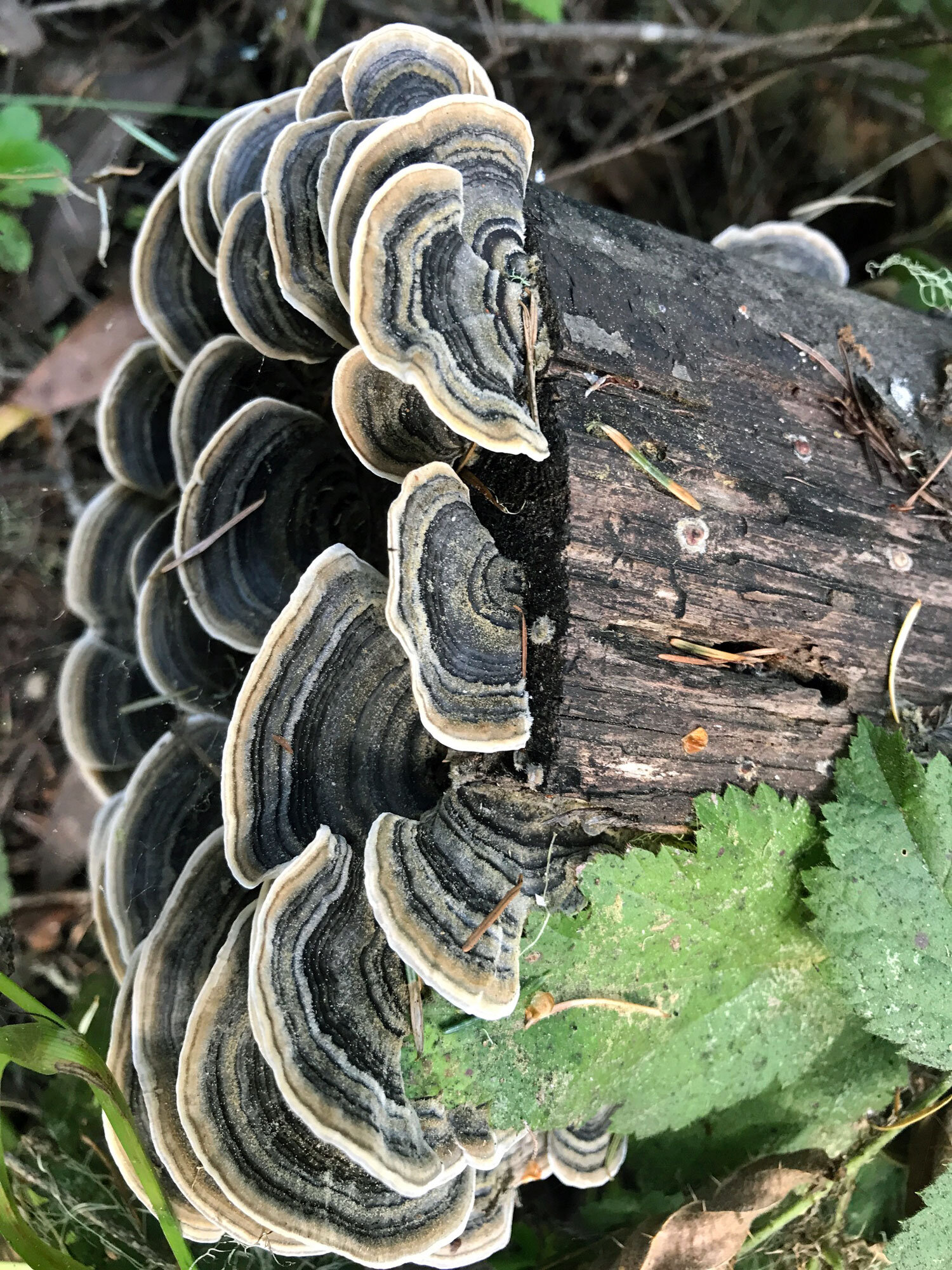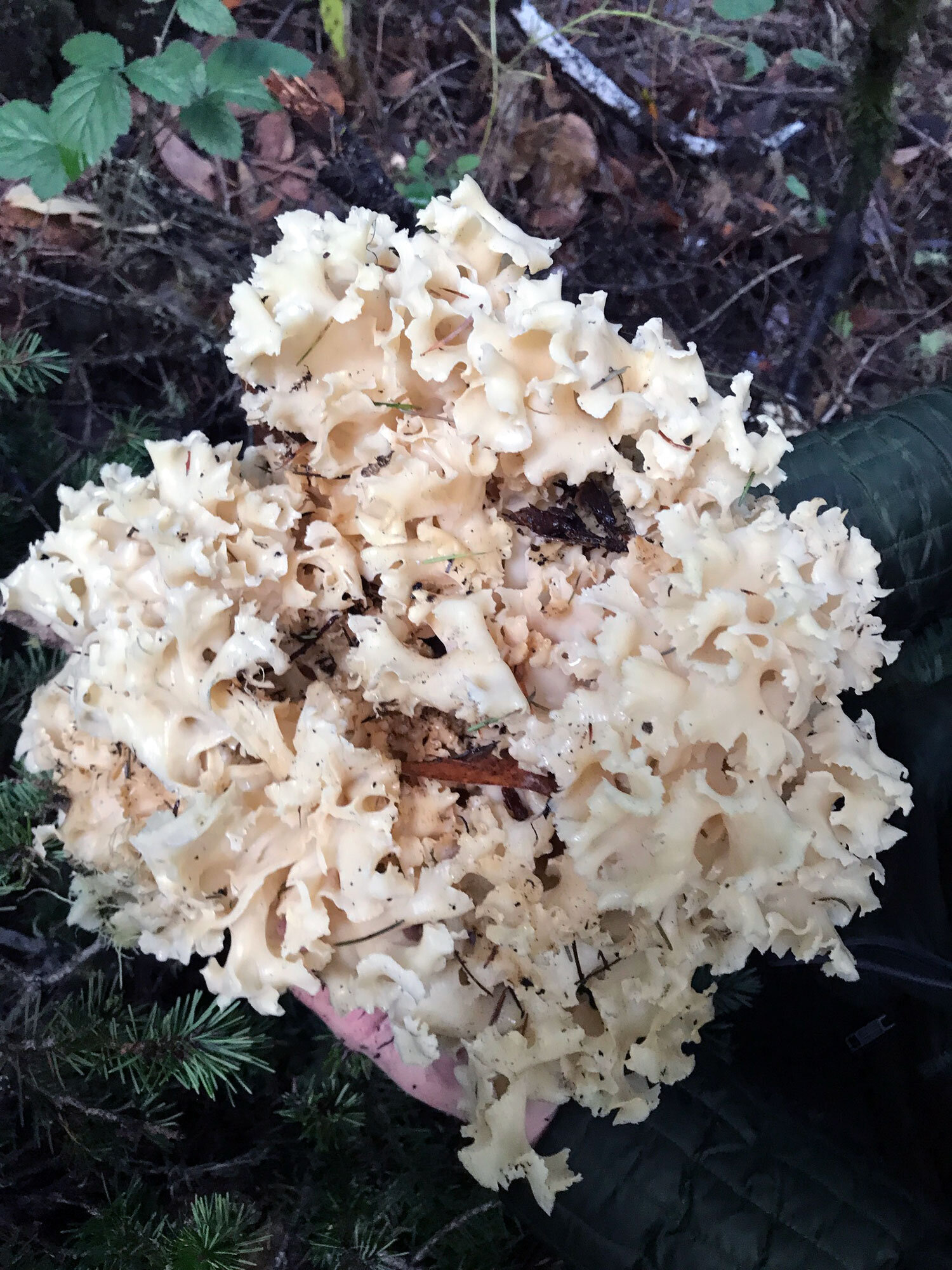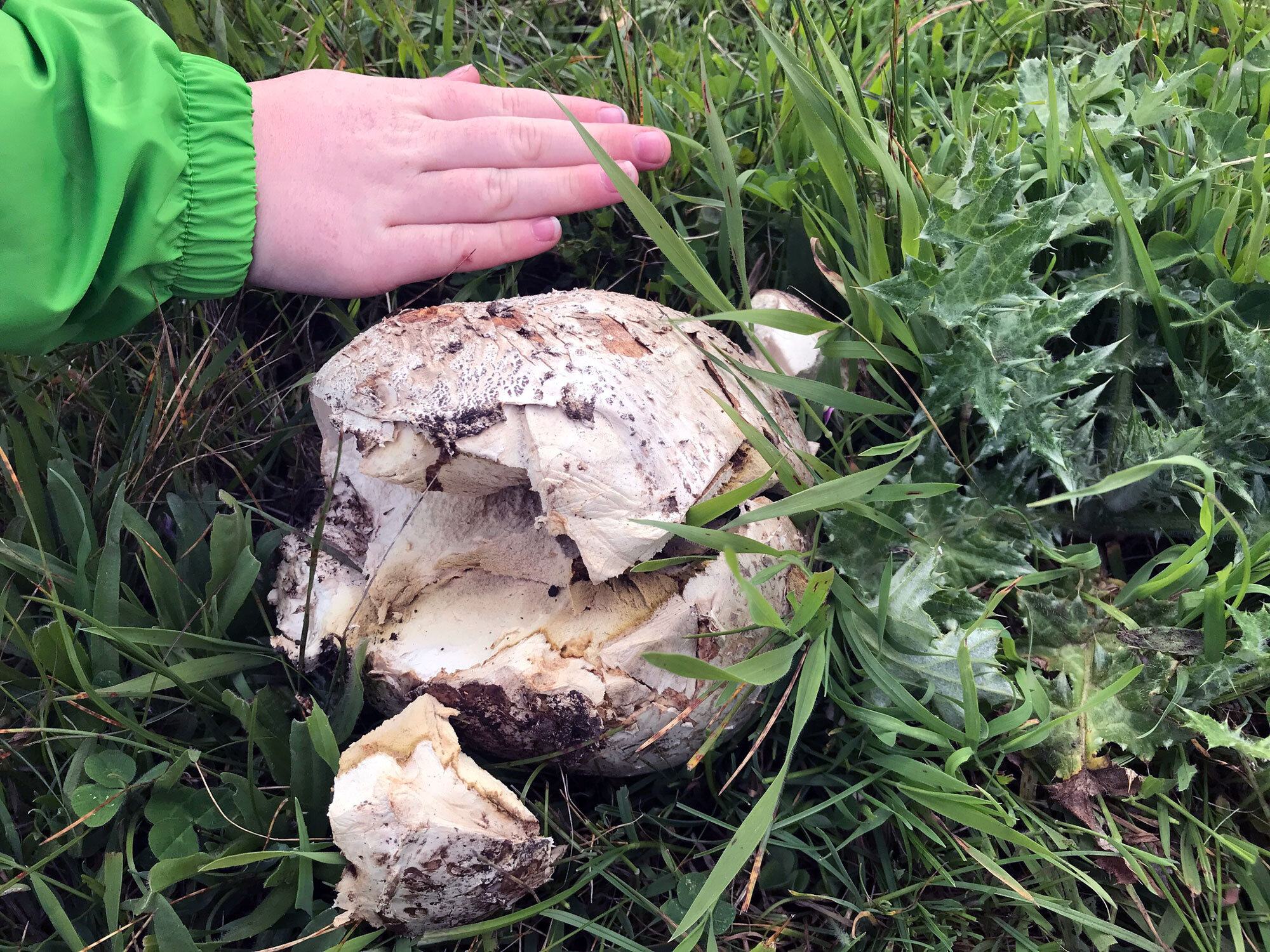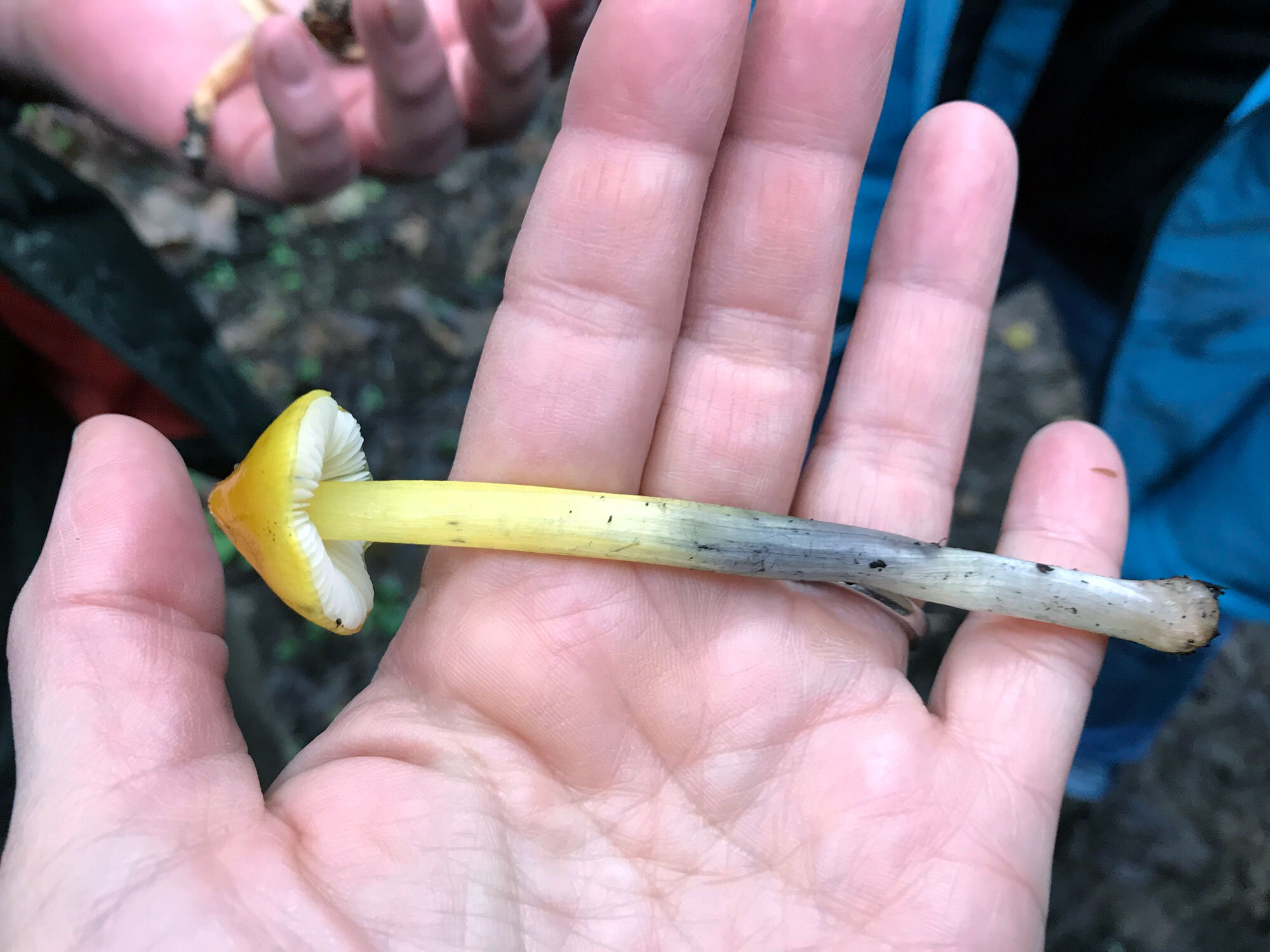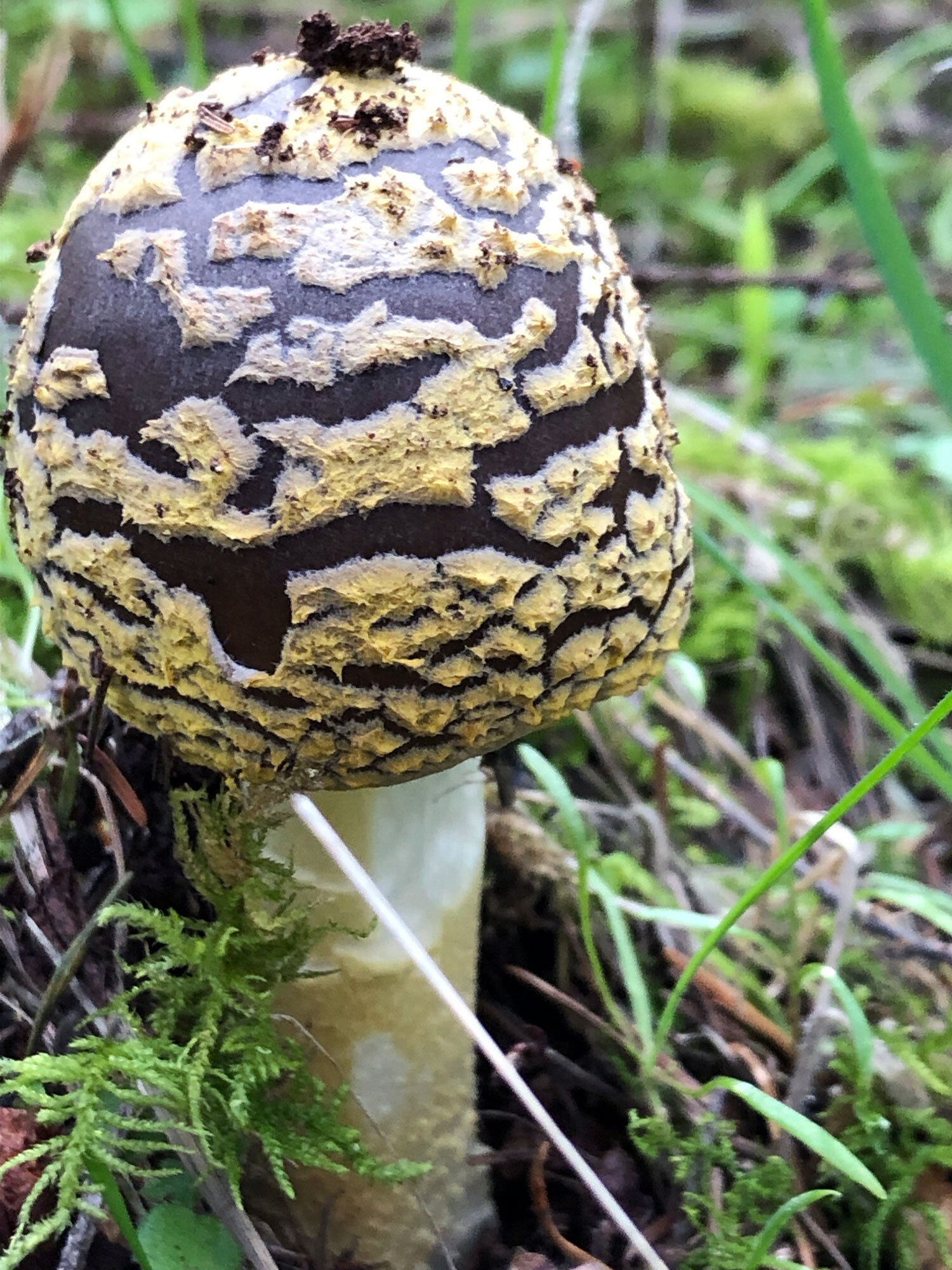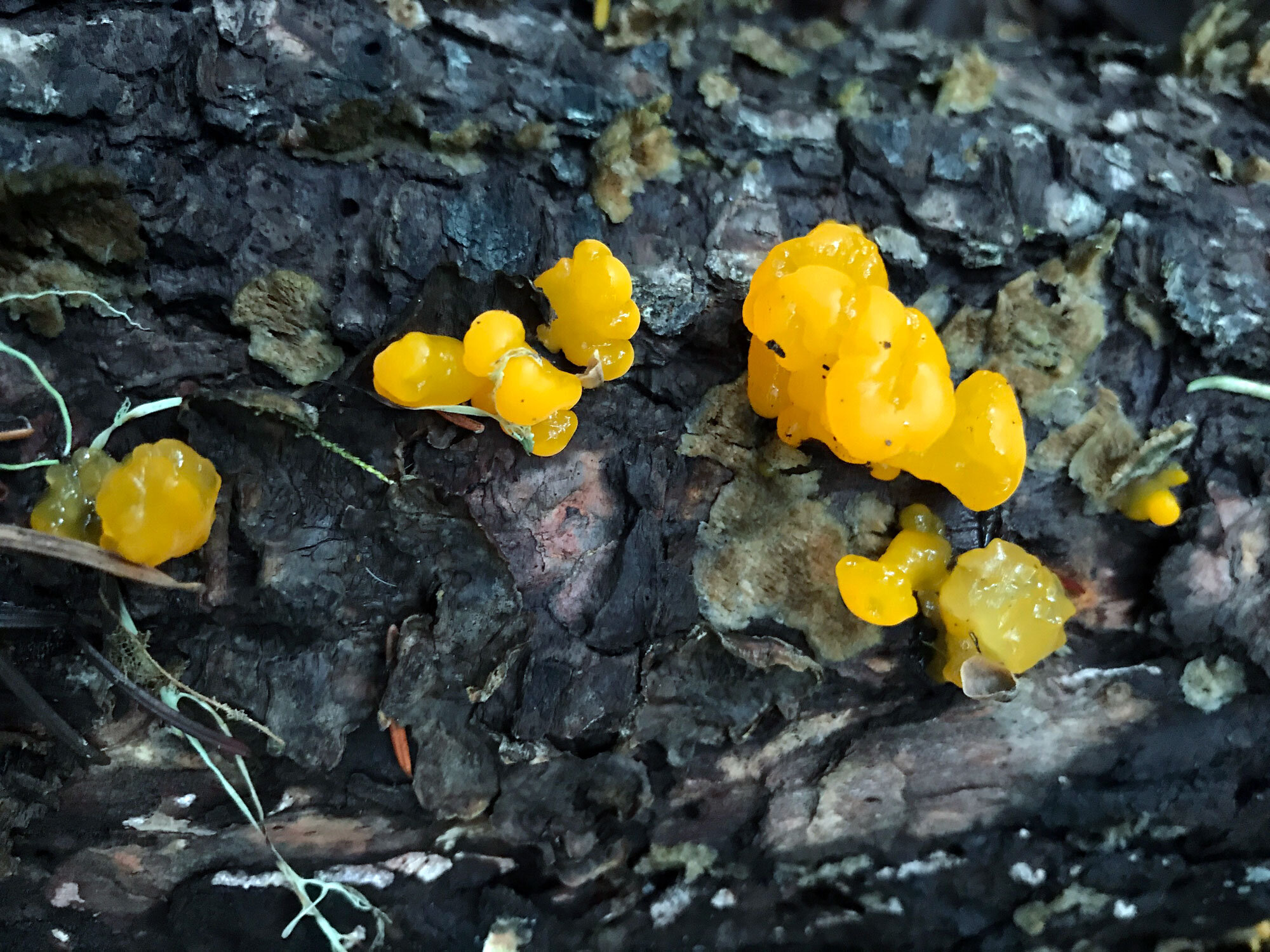Mushrooms
The winter rain has started and that means mushrooms are here! For the past several years at the end of January, I have volunteered to facilitate the Mushroom Identification class taught by David Campbell at the Point Reyes National Seashore Association’s Field Institute. It’s one of the most popular classes of the year and I learn something new every time. I highly encourage you to take his class! I’ve summarized some of what I’ve learned from David. I have much more to learn about mushrooms and plan to assist with the class again this year. I hope I haven’t mangled too many facts.
David is a mushroom eater. I am not. I don’t trust my ability to identify mushrooms. David warns to never eat a mushroom you can’t identify with certainty. Mushrooms look different in different regions and countries. Deathcap mushrooms in California look like mushrooms that are safe to eat in other places. Fear aside, mushrooms are fun to spot when hiking. They appear in the winter when almost nothing else is blooming. Many varieties are visually spectacular and the tiny ones look like trees in a miniature world. I love mushrooms.
Mushrooms (fungi) have three types of relationships with other organisms:
symbiotic/mycorrhizal — nourished by living or dead organisms, mostly trees and some plants. In this partnership, the tree gets nitrogen, minerals and resistance to disease and the mushroom take moisture and the products of photosynthesis from the tree. Some examples include amanitas, chanterelles, boletes and truffles. This type of fungi is very difficult to cultivate.
saprophytic — decomposers of decaying organic matter such as wood, leaves, manure. Some examples include morels, oyster, shaggy mane, puffballs, black trumpet. This type can be cultivated. This is the largest group of fungi.
parasitic — attack and may kill their host. An example is honey mushrooms. This is the second largest group of fungi.
Some interesting fungi facts
Coal was made from fallen trees before fungi existed to decompose them.
Roots spread far from a tree - at least as far as the branches, so mushrooms can be found in mixed wood forests far from the obvious host trees.
Mushrooms are the fruit of the fungal organism. They cannot be over-picked. The main threat to mushrooms is loss of habitat. The body of the organism grows underground as a network of tiny threads or hyphae that intermingle with tree and plant roots.
Mushrooms don’t fruit every year.
Each species of mushroom has a preferred range of temperatures. For example, burn morels fruit when the temperature is 48-58 F. and the soil temperature is in the 50s.
A selection of mushrooms in Point Reyes
These are some of the mushrooms I’ve encountered in Point Reyes over the years. Many of them were collected during the mushroom identification class with David Campbell. I would like to find a bird’s nest fungus. They are very small and challenging to spot. You can click on the images to see detailed information on iNaturalist. All of these fungi have been confirmed except the Purple Edge Bonnets, the Golden Spindles, and the White Coral Fungus.
How to identify a mushroom
The mushroom’s appearance changes over its life and based on its environment. You need the whole mushroom to truly identify it. Elements to consider include:
Cap shape. (round, conical, vase)
Texture of surface. (glossy, textured, sticky)
Gill arrangement. How do the gills join the stalk? (crowded, broadly spaced, forked, horizontal, vertical)
Gill color. Varies with age. Spores give gills their color.
Spore color. (white, pink, brown)
Stalk also called stipe. (straight or curved? in the middle or on one side?)
Stalk base shape. (bulb, tapered, fat)
Stalk color and texture. (speckles, stripes)
Stain.
Color: What color does the stalk turn when scraped, bruised or cut?
Rate of occurrence: How fast or slow does it stain?
Persistence: Does the stain persist or change? For example, an Agaricus mushroom that stains red is edible. If it stains yellow temporarily and rapidly, it’s inedible. If it stains yellow slowly the next day, it’s edible. If it turns black the next day, it’s inedible.
Latex/milk. What is the color? Does it change color?
How the stalk breaks: stringy and bends or breaks like chalk. For example, Russula and Lactarius break like chalk.
Does it have a universal veil (sac the mushroom breaks out of) or a partial veil (on gill/spore area for protection)? You will see remnants of the universal veil on the top of the mushroom and as a “ruffle” on the stem base. A partial veil shows up at the top of the stem and may leave a stain from the spores on the stem. The presence of a universal veil in the Point Reyes area tells you it’s an Amanita mushroom.
Odor/Aroma. (fruit, cedar, chemical, corn silk)
Taste. (sweet, mild, pepper, bitter) A tiny amount will not hurt you. Remember that just because it tastes good doesn’t mean it’s safe to eat. Deathcaps taste good.
Substrate. (earth, manure, wood, wood chips, pine cone) Chanterelles do not grow on wood.
Size. (giant, big, medium, small, teeny-weenie) Some vary in size such as Amanitas.
Habitat (burn zone, oak woodland, pine forest, meadow, corral) and stage in progression of the forest growth. Pine, oak, fir, manzanita and madrone are often where you’ll find mushrooms. Oak, pine, cypress are good trees for mushrooms. Cypress groves have interesting mushrooms growing in the duff. Bay, maple, redwood are not good for mushrooms unless there are oaks nearby.
Season and location. There are many different varieties of mushrooms and their growth varies by location. Matsutake grows with tanoak in Point Reyes but in Oregon, you’ll find them with Lodgepole pine. There are six varieties of Chanterelles and 150 varieties of morels worldwide. Morels grow in the spring and Chanterelles grow in the winter (Dec-Feb).
How to do a spore print to identify a mushroom
Mature mushrooms produce spores. To capture the spores you will need something for them to fall onto such as paper (half white, half black to show light or dark spores), clear glass or aluminum foil and a bowl to cover the mushroom to prevent air from taking away the delicate spores.
Put the mushroom cap face down on the glass, paper or foil.
Cover with a bowl.
Leave overnight.
The next day, lift the cap from the paper/glass/foil and look for the spore color. If it’s white, that’s not very helpful since most spores are white, but other colors (pink, brown) will narrow down the possible identifications.
Nine mushroom families of interest
Amanita. The Amanita is the most commonly eaten mushroom in the world. Most white amanita are toxic. The deathcap is an example of a white amanita although its cap is green in tone and can be brown. In Point Reyes, you’ll typically find deathcaps growing with Coast Oaks. Fly agaric is another amanita. It has psychedelic qualities but it’s very toxic. People who have tried it don’t try it a second time. The toxins outweigh the psychedelic qualities.
Agarica. Button mushrooms, field mushrooms.
Russula. Brittle stems that break like chalk. Examples include Candy caps, milk caps, shrimp. Shrimp tend to be large and purple or purple and green with pale yellow spores. They have a peppery or mild flavor. Lactarius or Latex mushrooms such as Candy caps are easier to identify by their milk. Candy caps’ milk is almost clear like nonfat milk and it stays the same color. To produce milk, bend back the gills then push them back together to squeeze out milk.
Boleta. Examples include suillus, king bolete, porcini.
Cantharella. Examples include chanterelles, gomphus. The Chanterelle has a false gill with folds of flesh, not a sheet.
Hydna. Example includes hedgehogs.
Tricholoma. Examples include oysters, honeys, blewits, matsutake, fairy rings. Blewits grow in dead material. They have a smooth cap and leaf duff will adhere to the base. They have a distinctive aroma. The ones growing under Cypress don’t taste good.
Polypora. Examples include artist’s bracket, conk, turkey tails, chicken of the woods.
Ascomycetes. Examples include morels, elfins, saddles, truffles, cup fungi.
Mushroom toxins
The effects of mushroom toxin poisoning typically show up 6-12 hours after eating, and even 20 hours later. Deadly toxins destroy your liver as your body struggles to get rid of the toxins. Death cap mushroom effects take longer to show up, so if the effects show up early, it’s probably not a death cap. Your body weight and the amount eaten are factors. Treatments for severe poisoning include liver transplant and blood transfusion. You can even drop dead from the volatile fumes produced cooking mushroom, such as with false morels. The most common effect of mild toxins is gastrointestinal irritation which is not life threatening. Environmental hazards are another way to be poisoned. Anything that is soluble in water can go into mushrooms so be mindful of where you pick them. Avoid cemeteries, golf courses, military bases. For safety, cook mushrooms well and don’t overeat - quantity of toxin matters.
The Bay Area Mycological Society covers mushroom poisoning including the 3 deadly mushrooms in California and what to do if you suspect mushroom poisoning.
Mushroom picking in Point Reyes National Seashore
You may collect 2 gallons plus 1 mushroom per adult per day.
The National Seashore has a brief informative page on mushrooms on their website as well as a full list of fungi in Point Reyes.
Recommended books
Mushrooms of the Redwood Coast by Noah Siegel and Christian Schwarz. David recommends this guide as the best one for the Point Reyes area.
California mushrooms by Dennis E. Desjardin, Michael G. Wood, Frederick A. Stevens.
Mushrooms demystified by David Arora
Download a mushroom app
Snout is the cute name of a mobile app to identify mushrooms. The name is a reference to pigs who are experts at sniffing out truffles. It was created by students at University of California, Berkeley in the Data Science masters program in 2019. Learn more about Snout.
Resources
Point Reyes National Seashore page on mushrooms and other fungi
List of macrofungi found in Point Reyes National Seashore (470+ species)
Deathcap mushrooms at Point Reyes National Seashore (podcast, 5 minutes)
Point Reyes National Seashore annual fungus fair in winter: Since 2005, fungi have been gathered by volunteers who collect, identify, and catalog mushrooms for an ongoing study at the Point Reyes National Seashore.
Mushroom Identification class and retreats led by David Campbell at the Point Reyes National Seashore Association’s Field Institute
Bay Nature article on Why do mushrooms return to the same place by Michael Ellis
Bay Nature article on How to tell a true Turkey tail from an imposter by Alessandra Bergamin.

